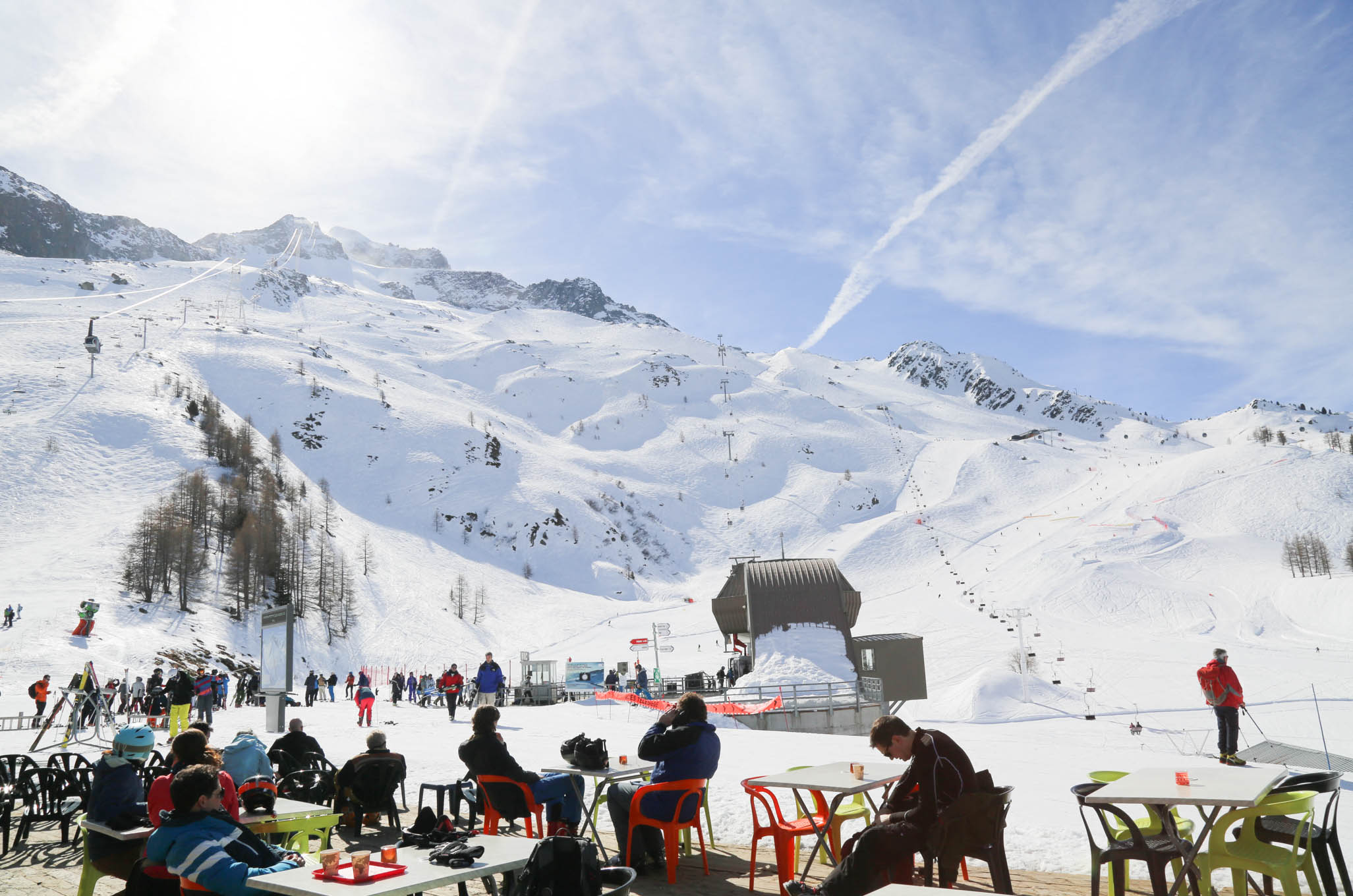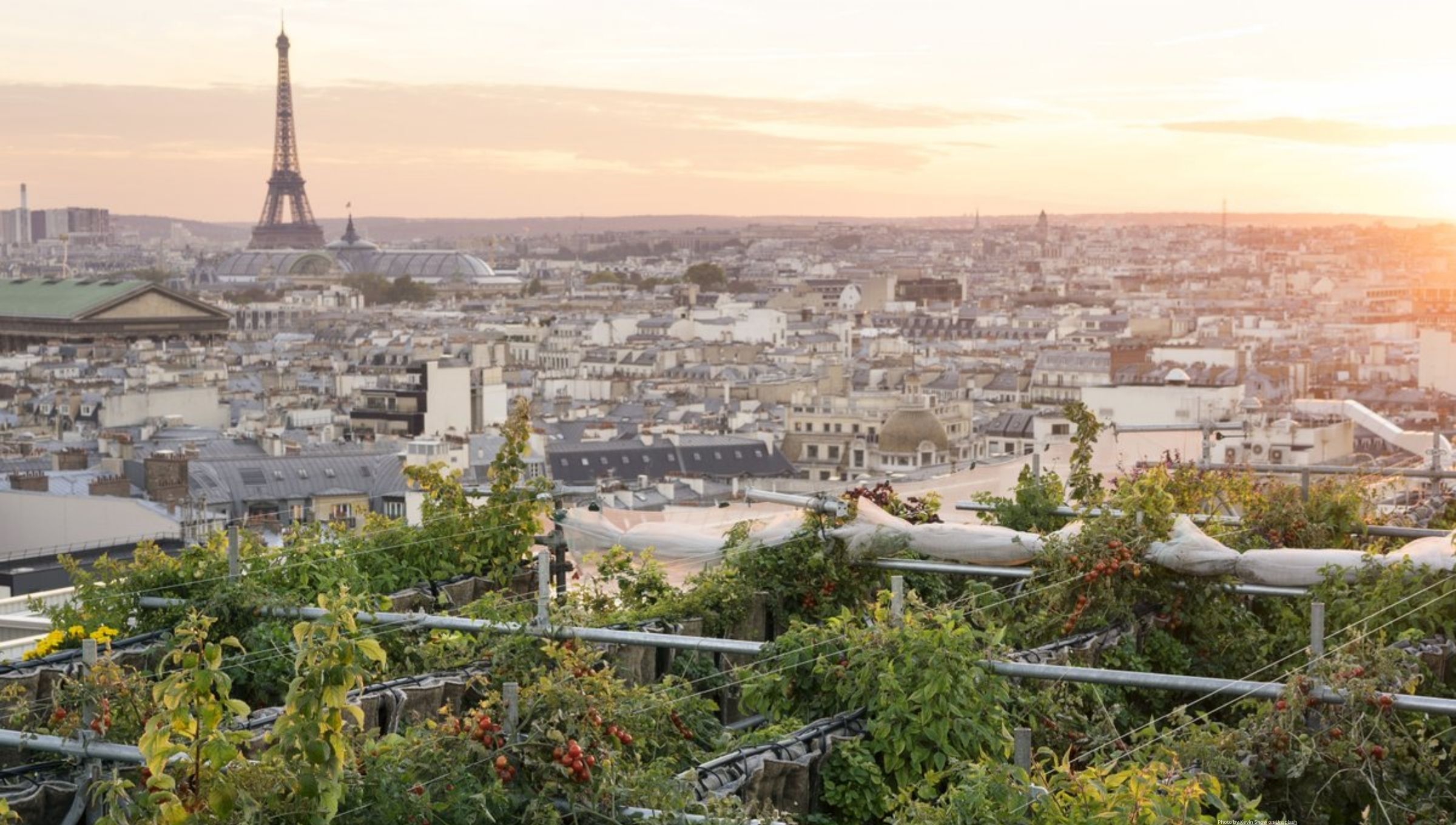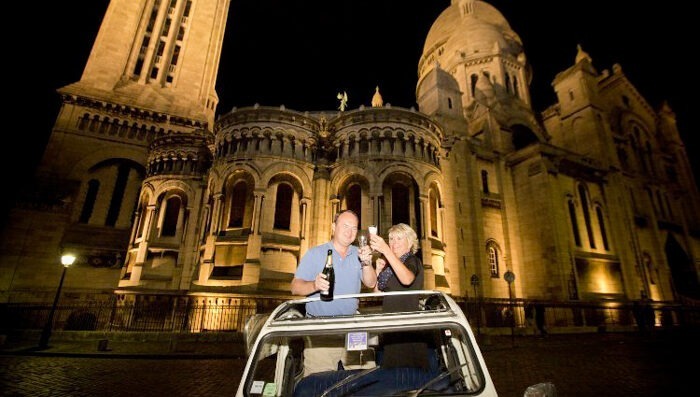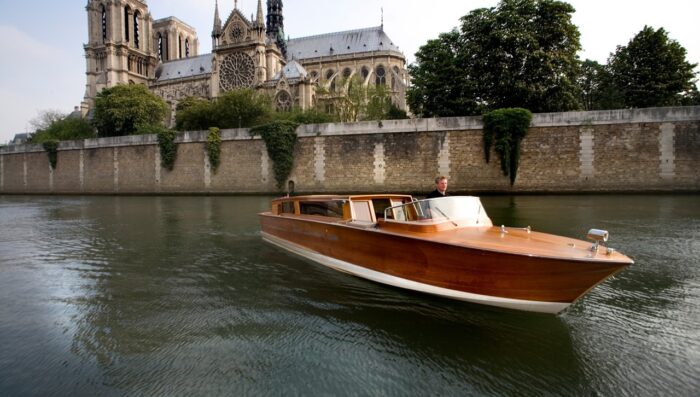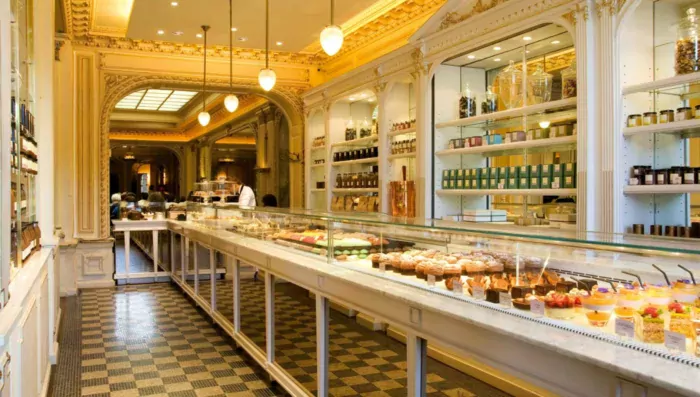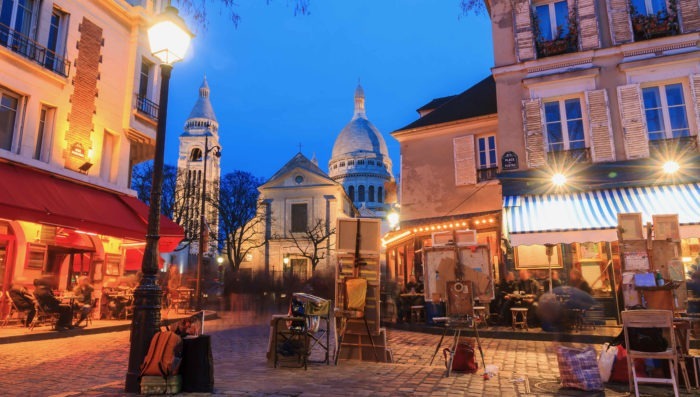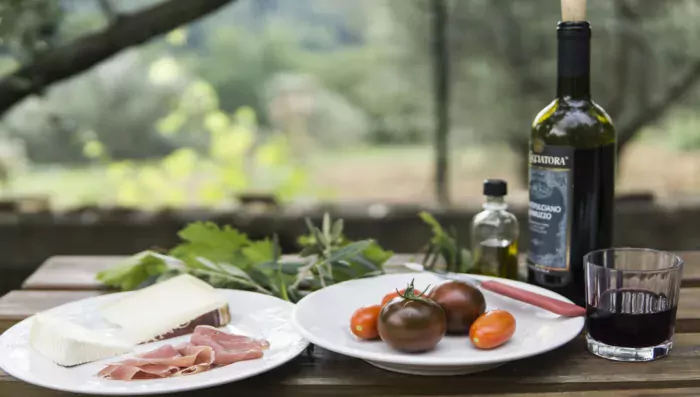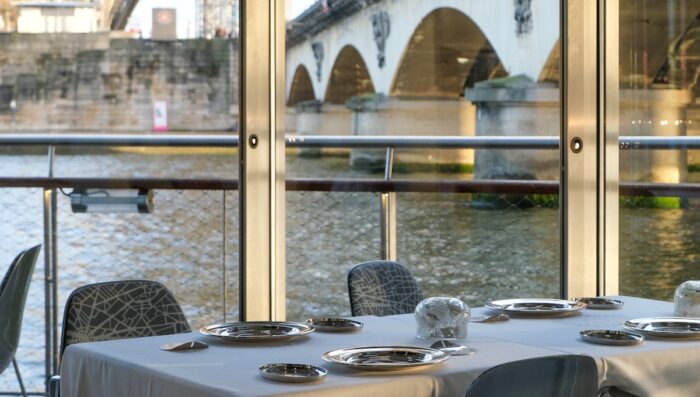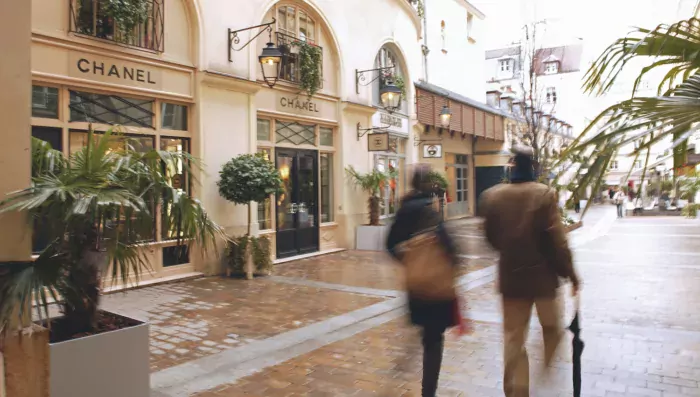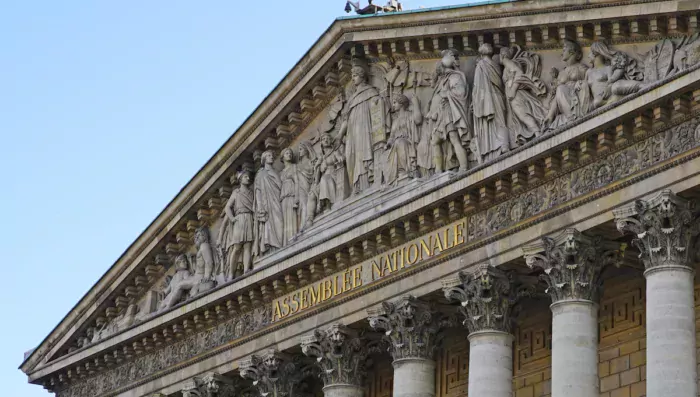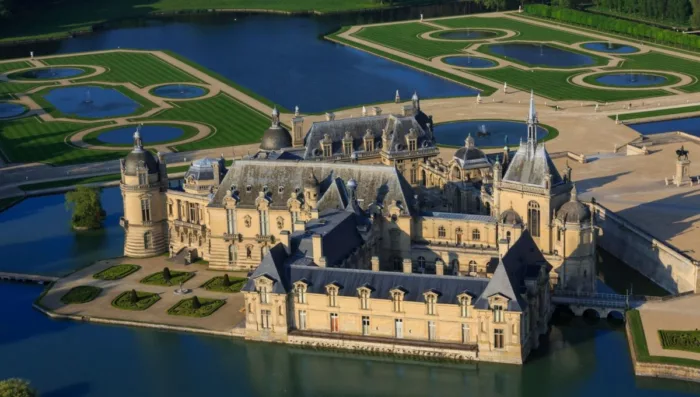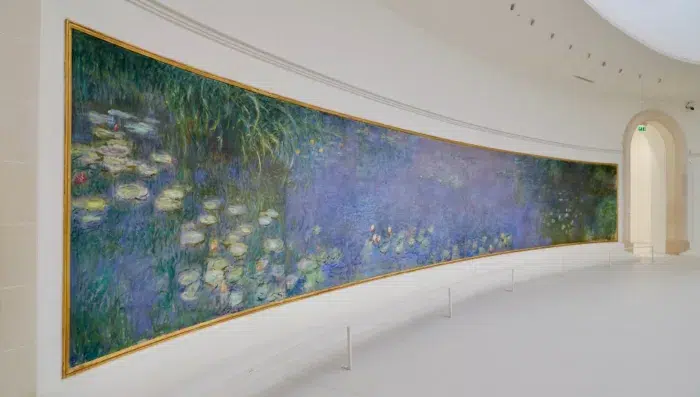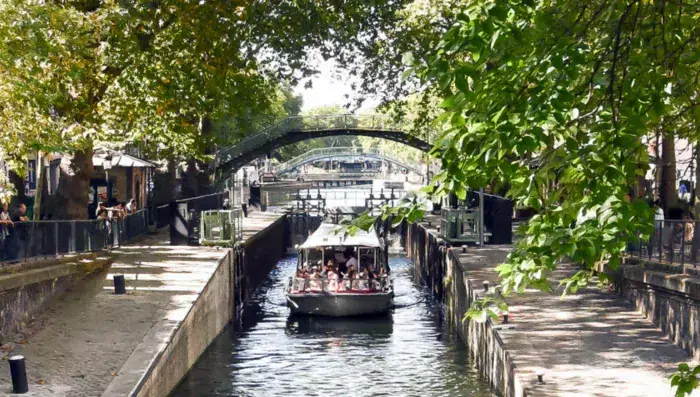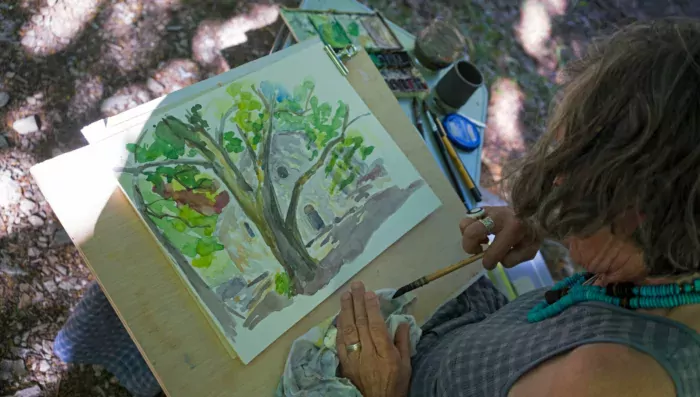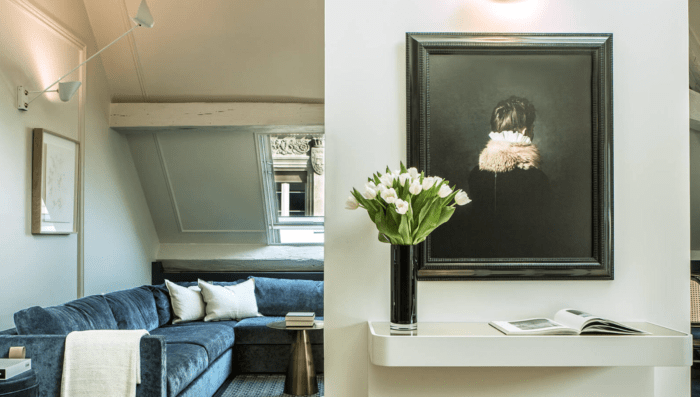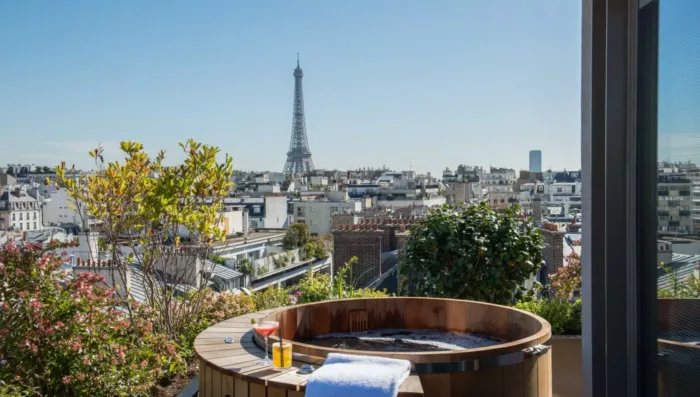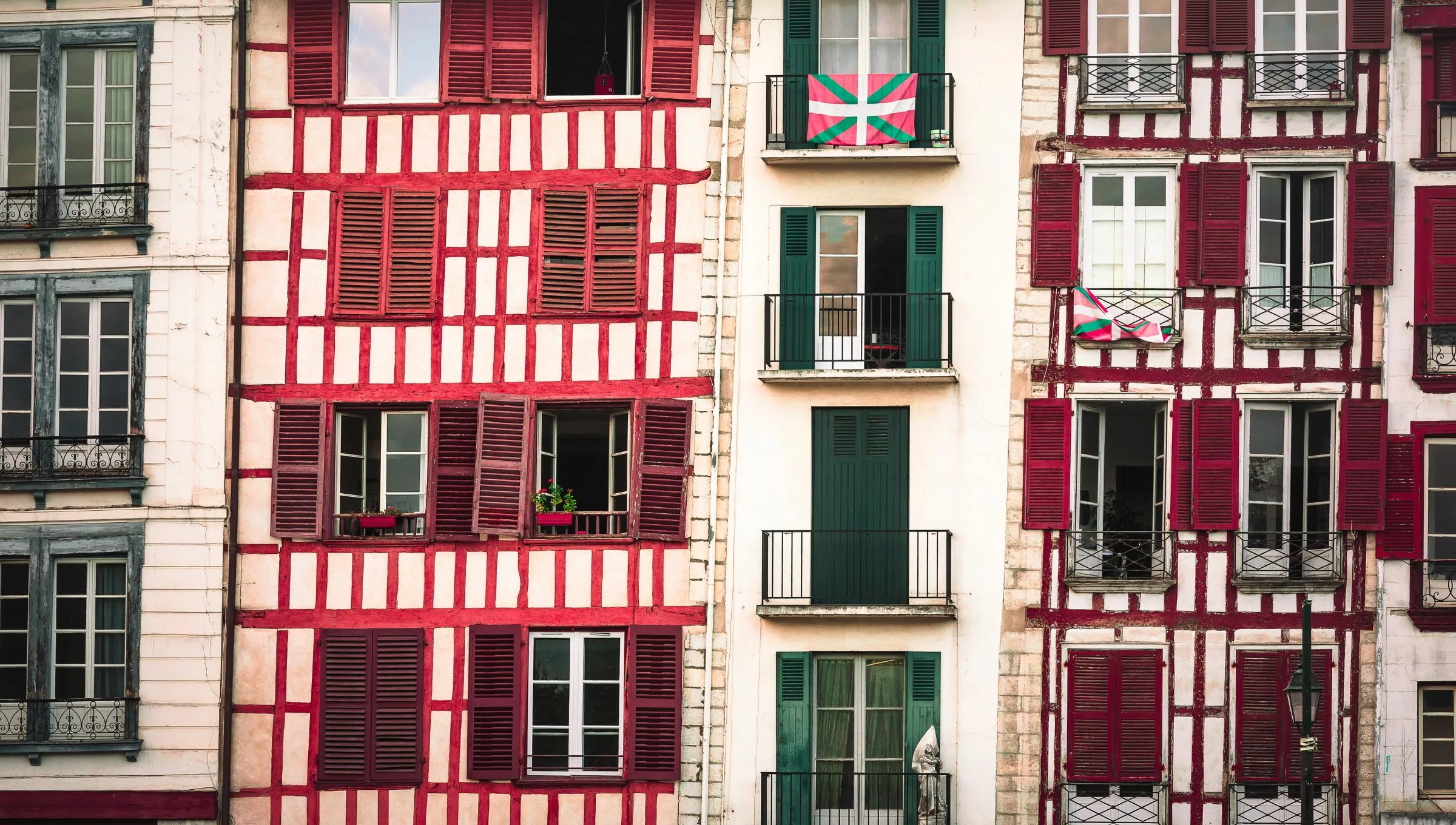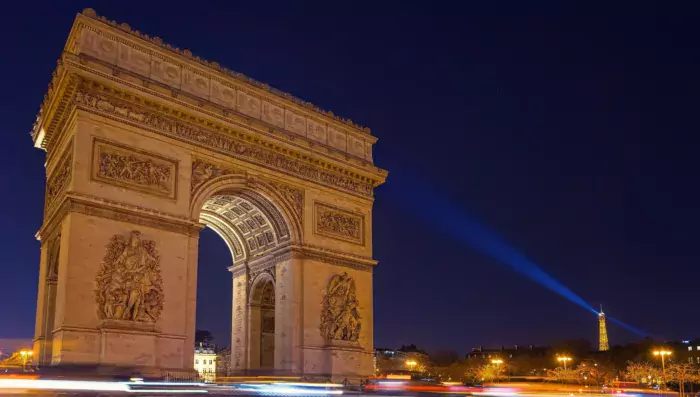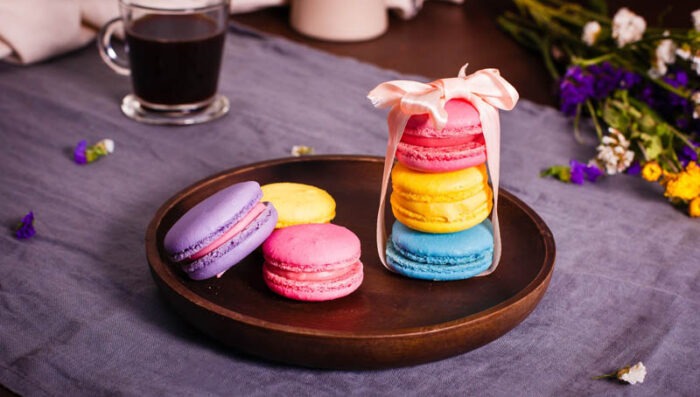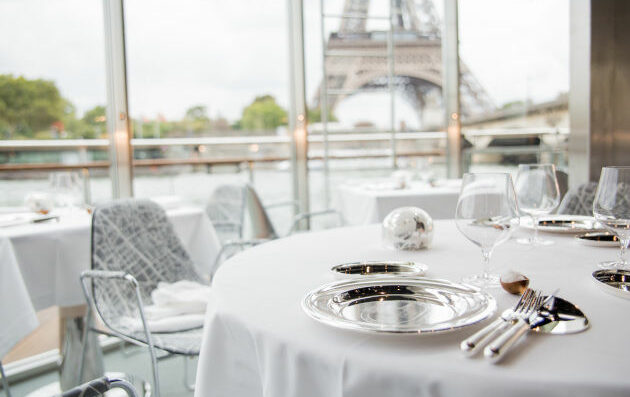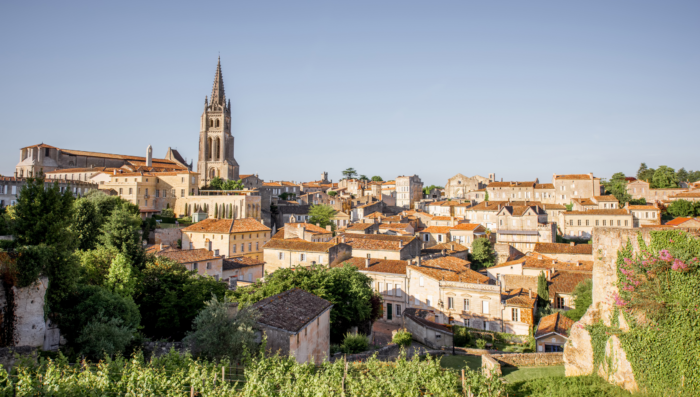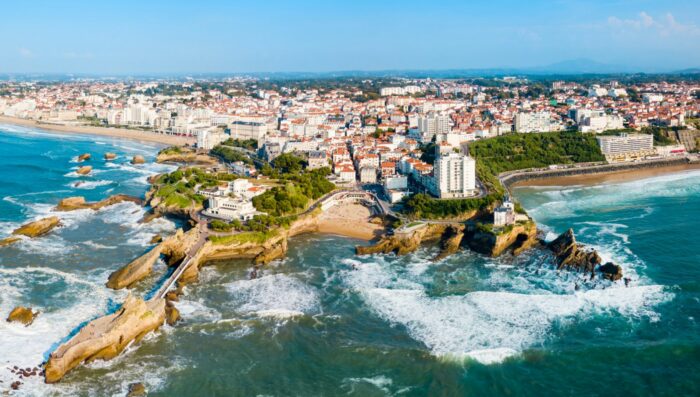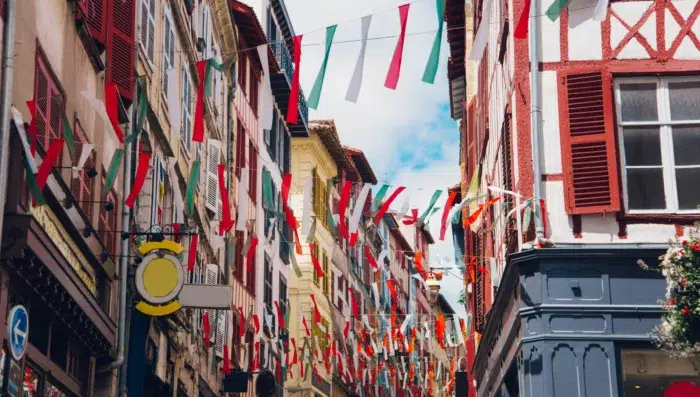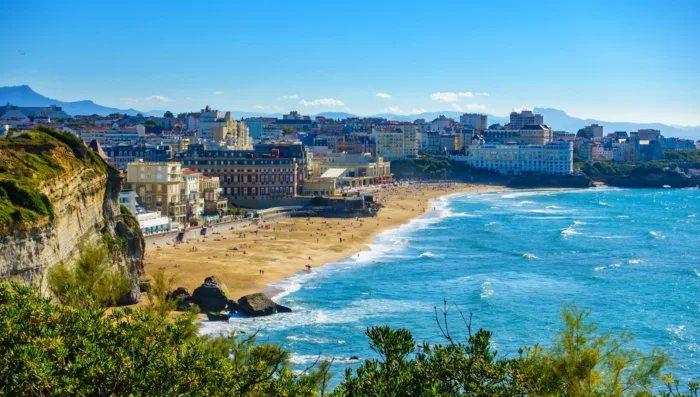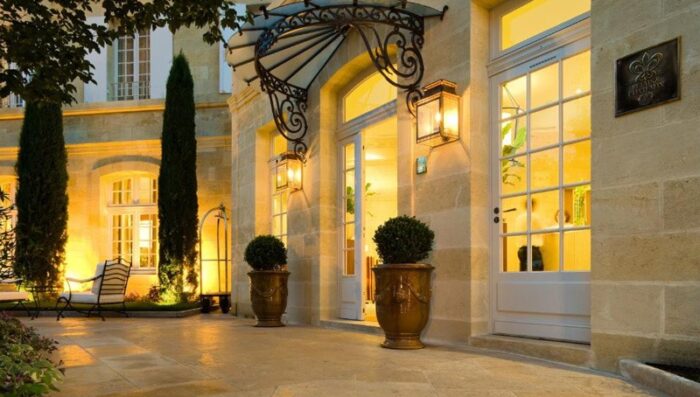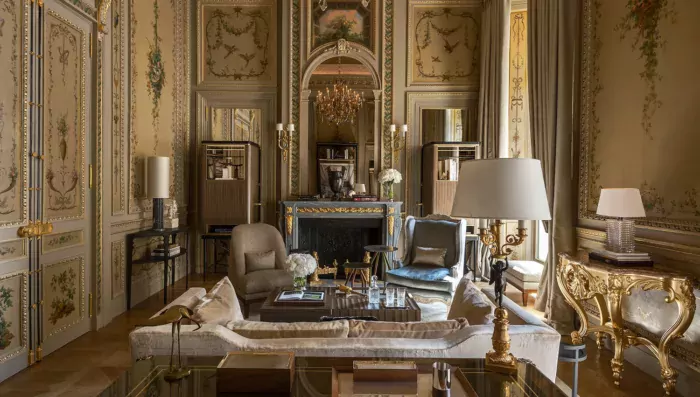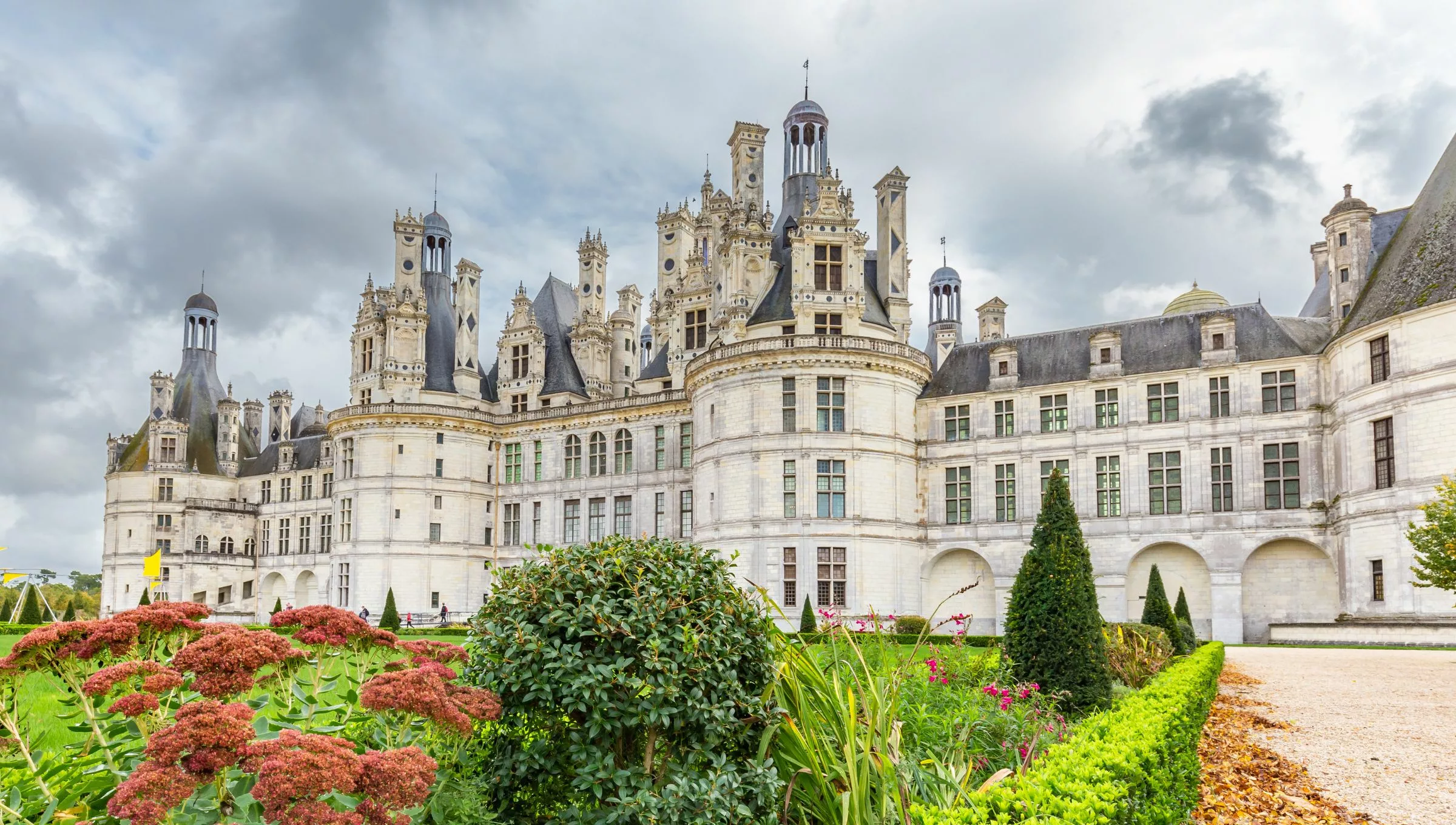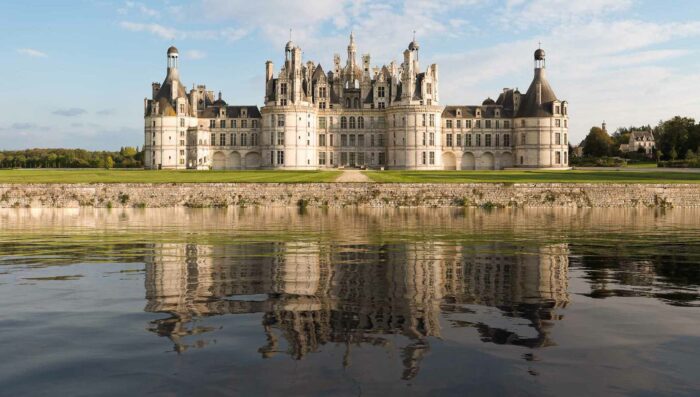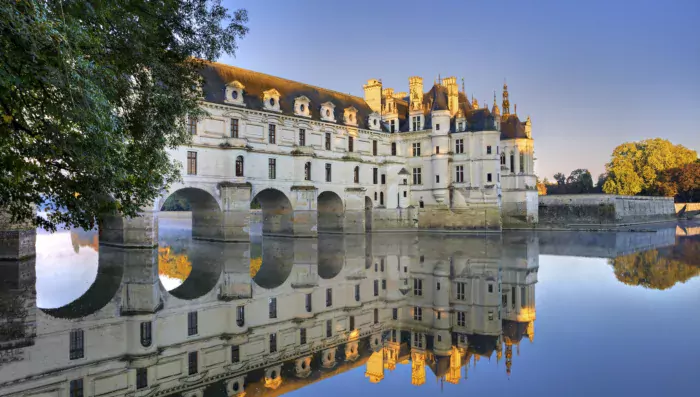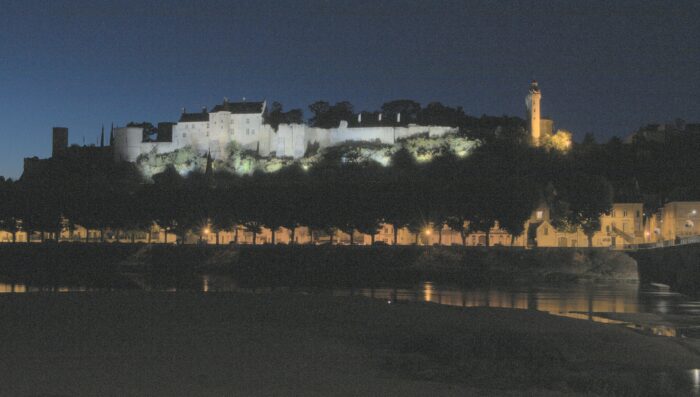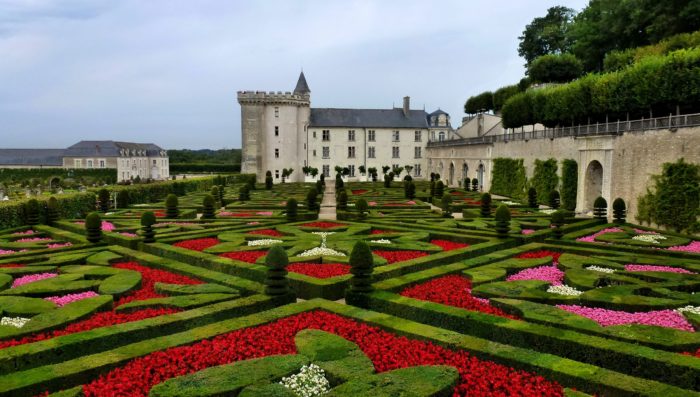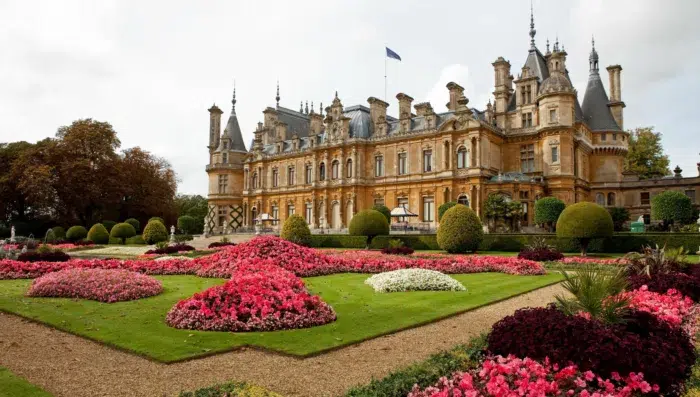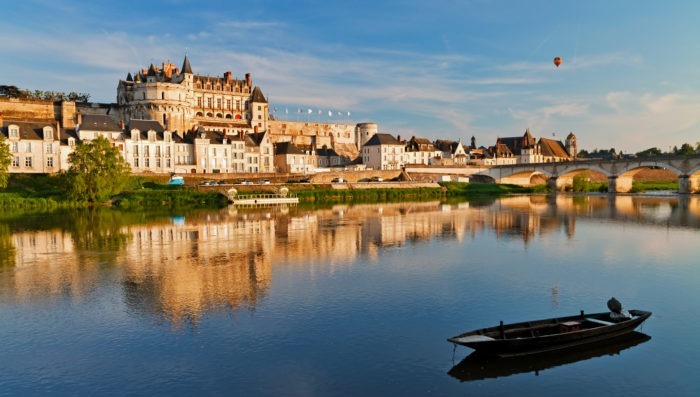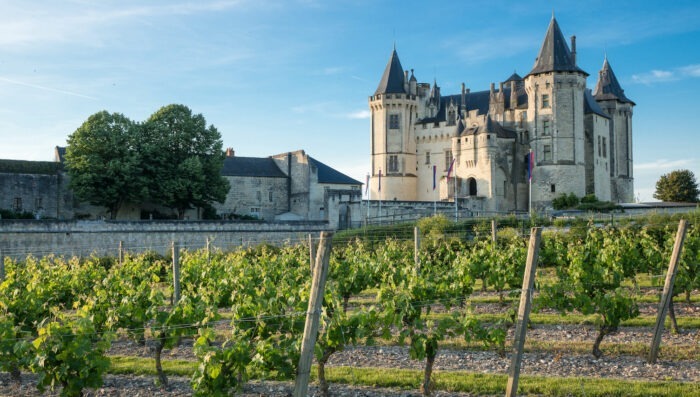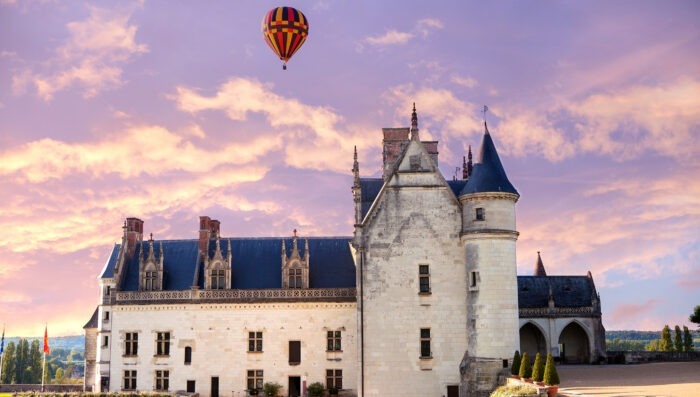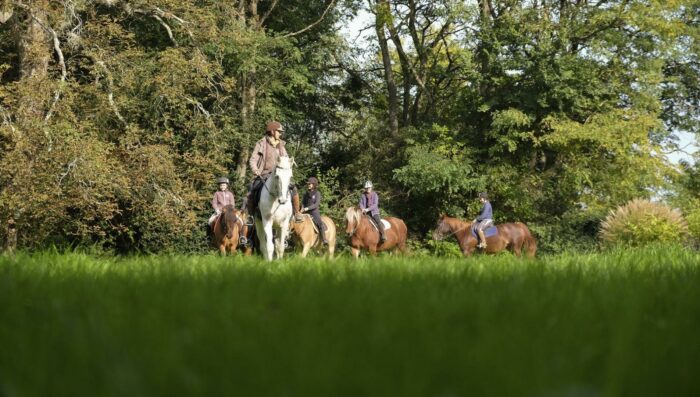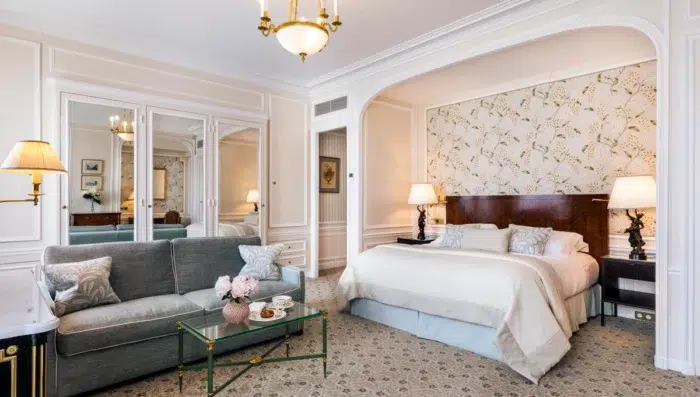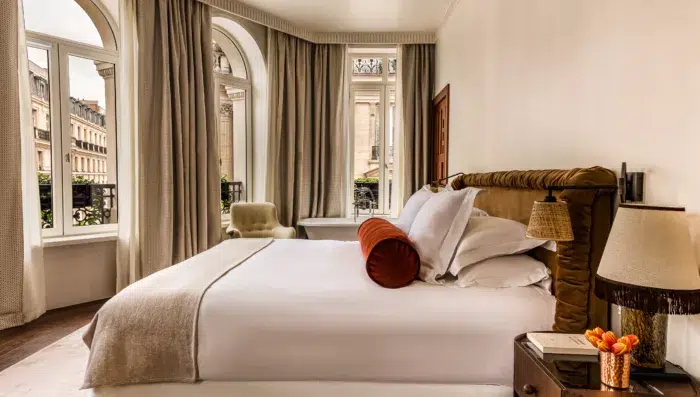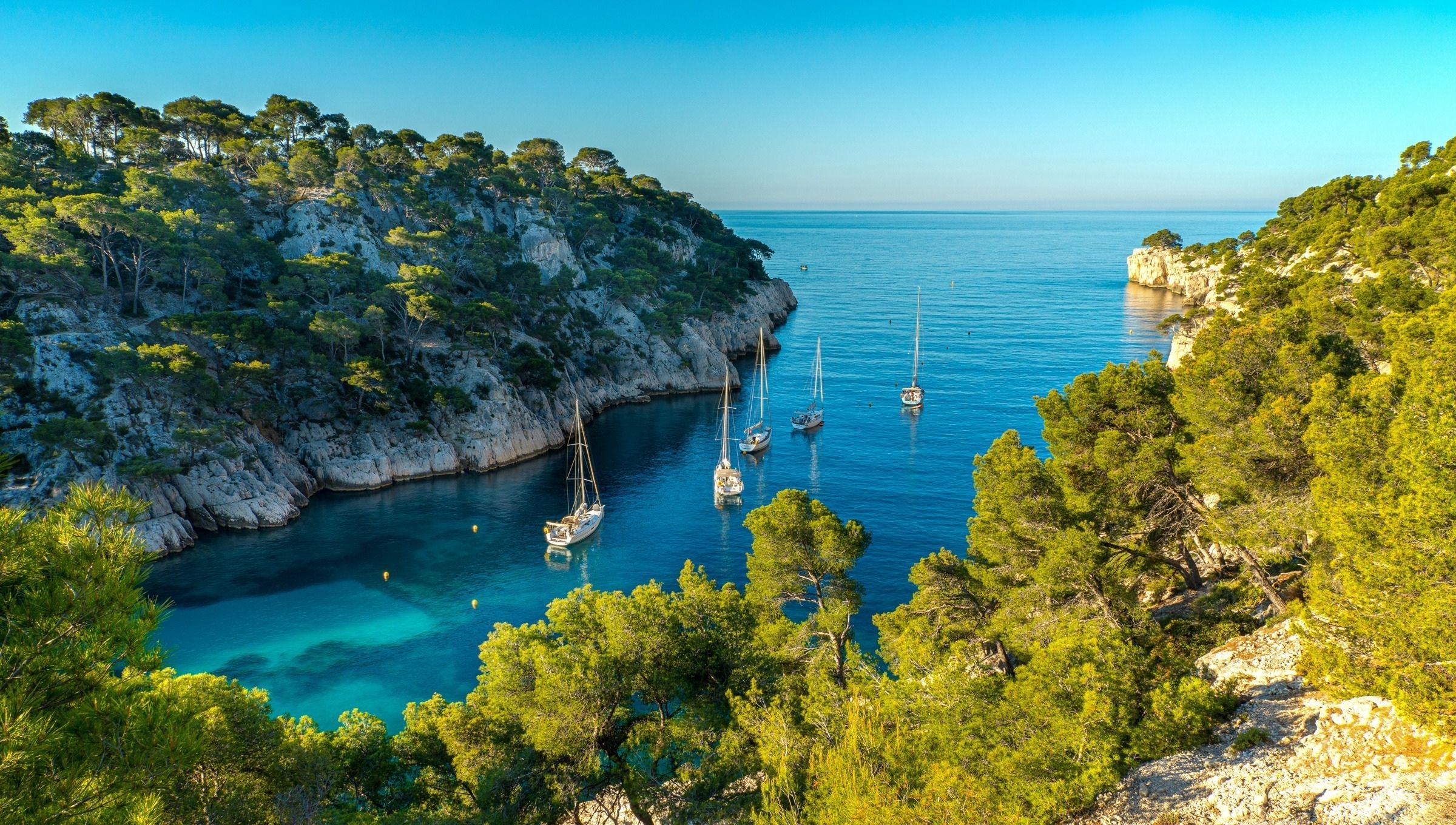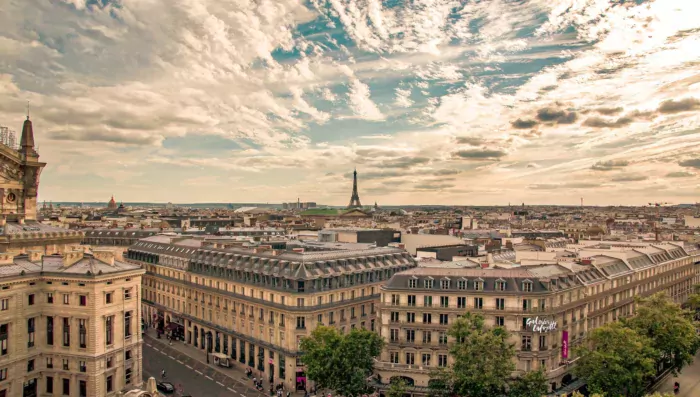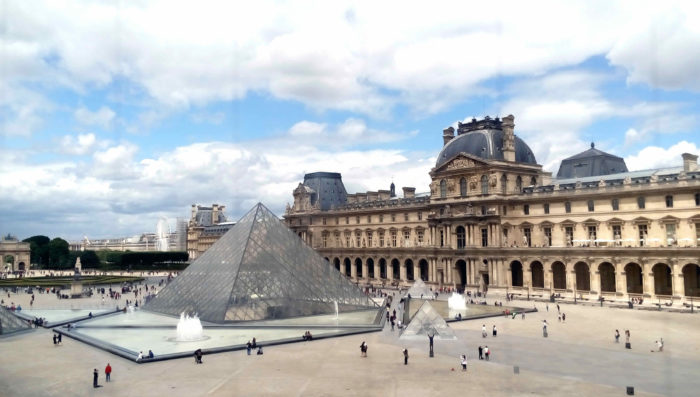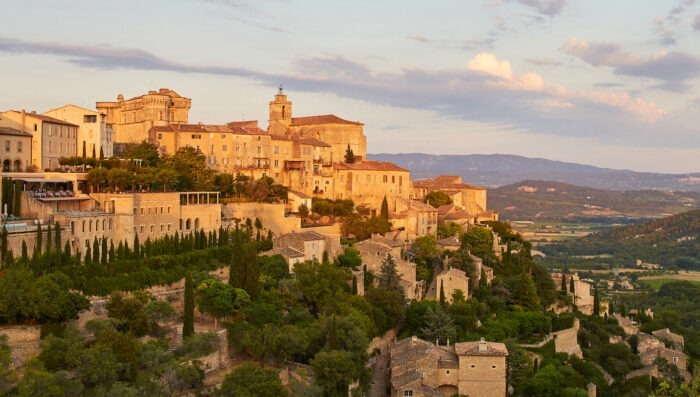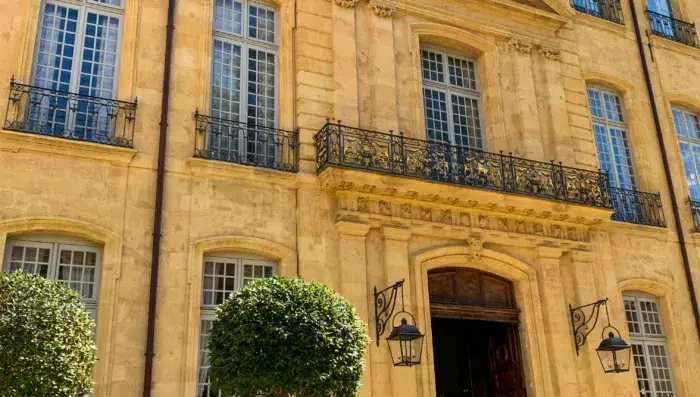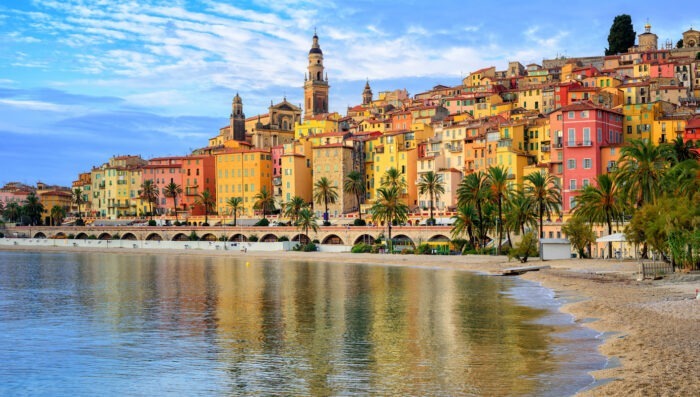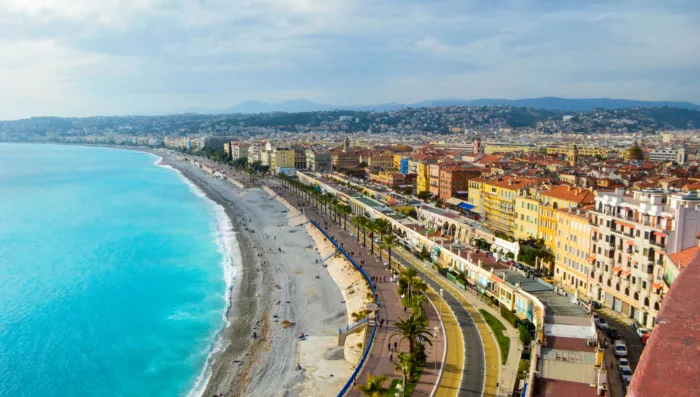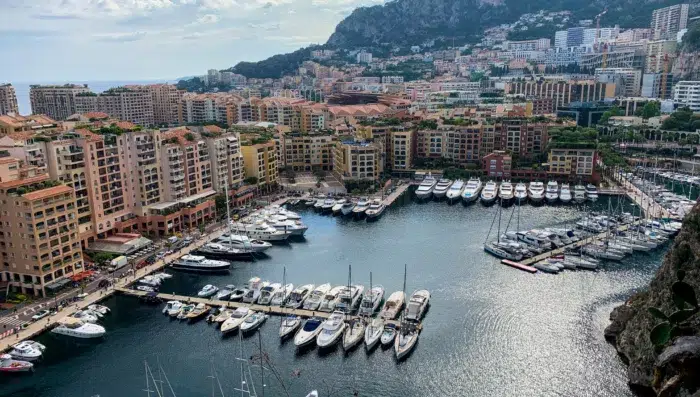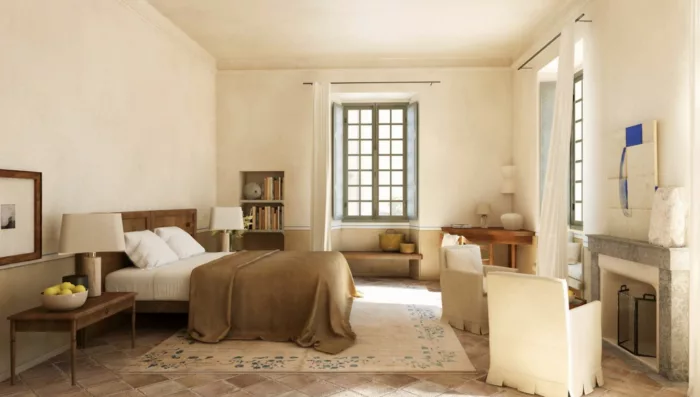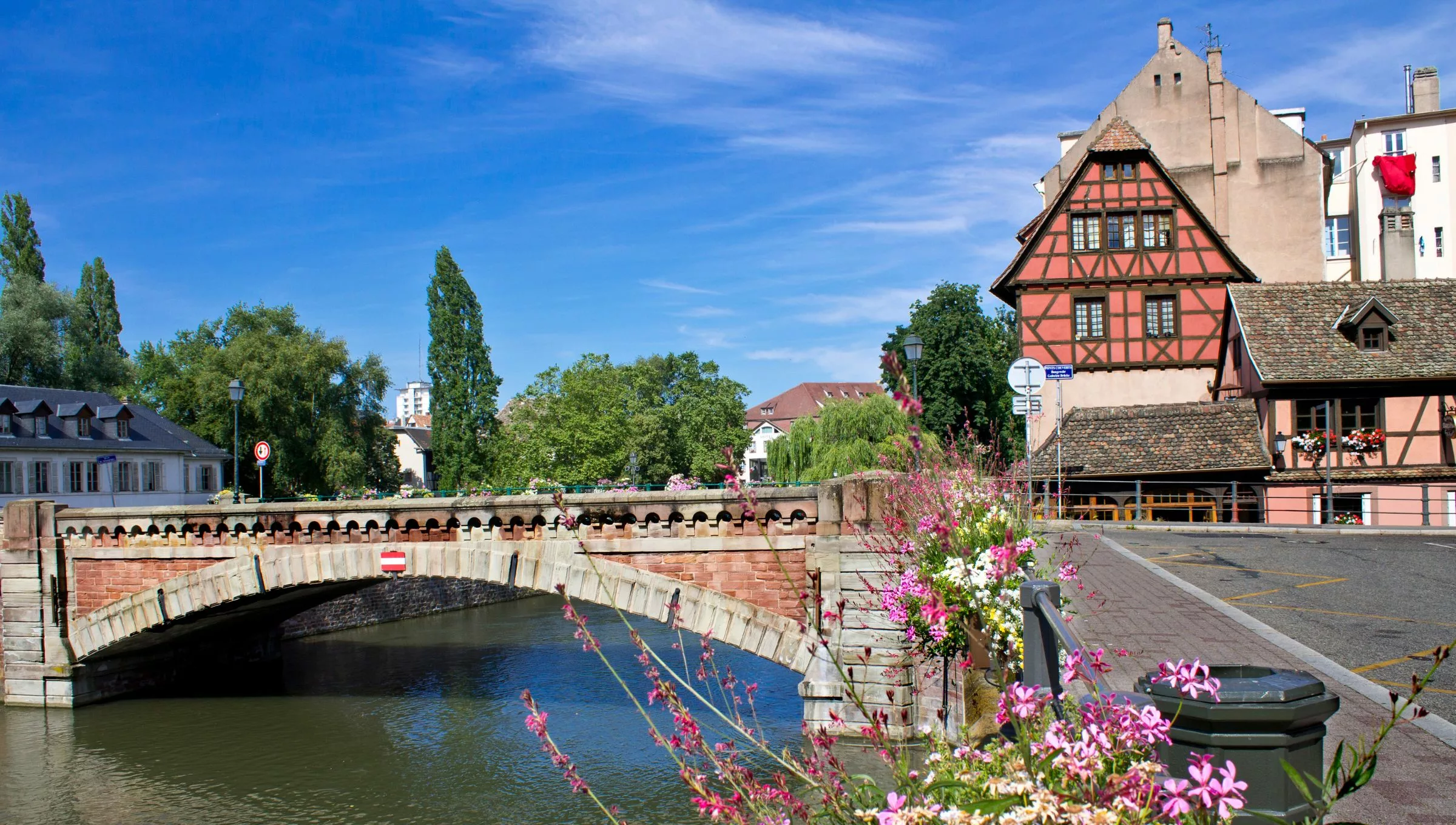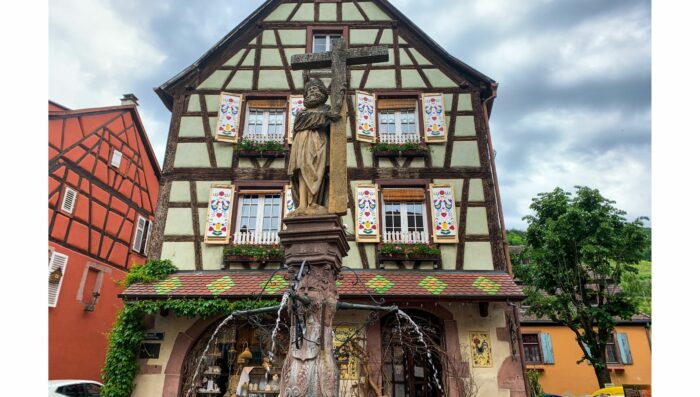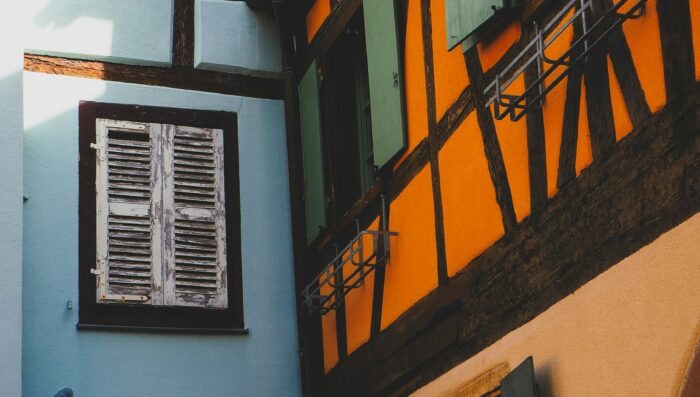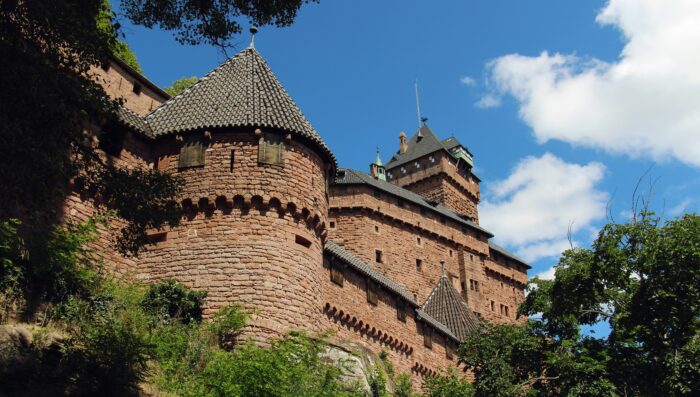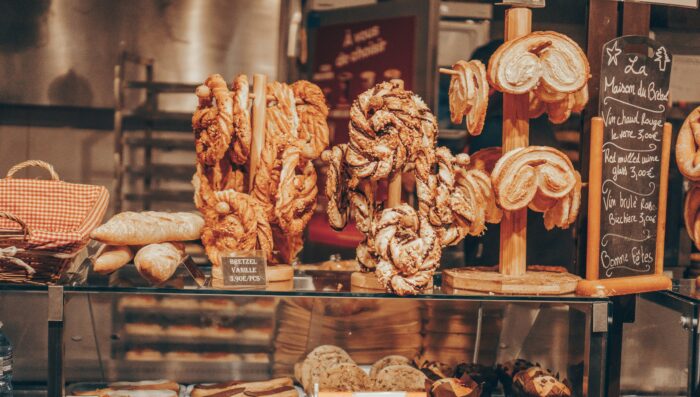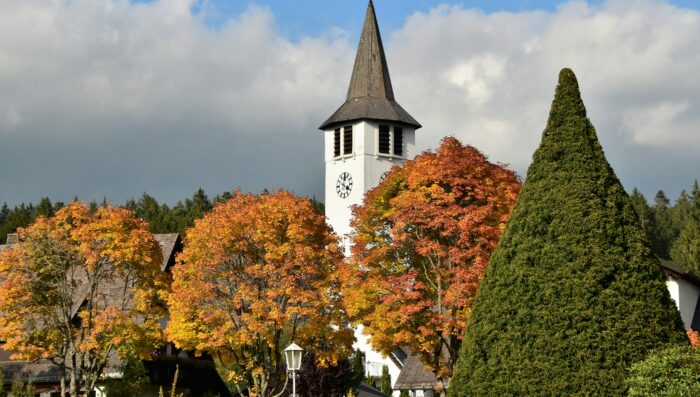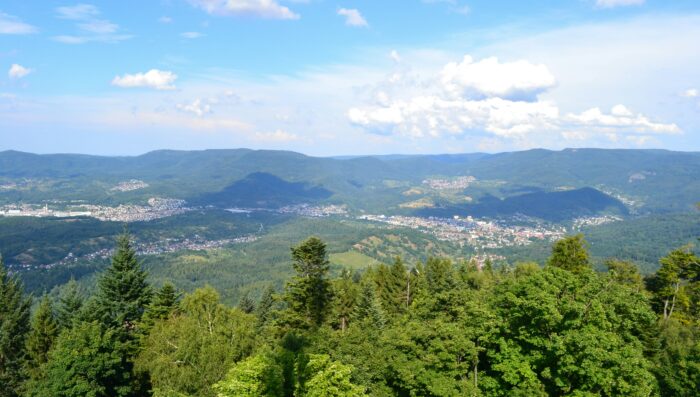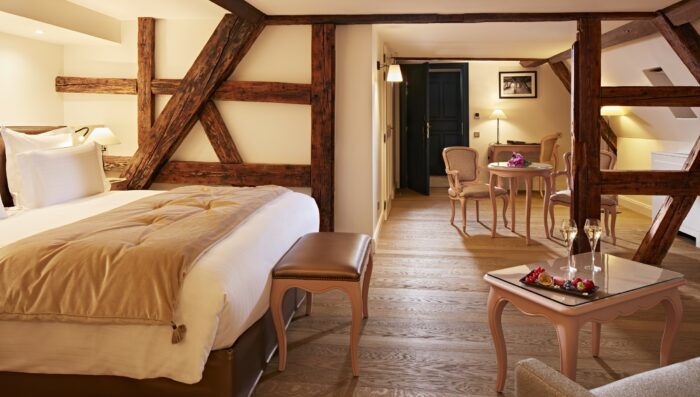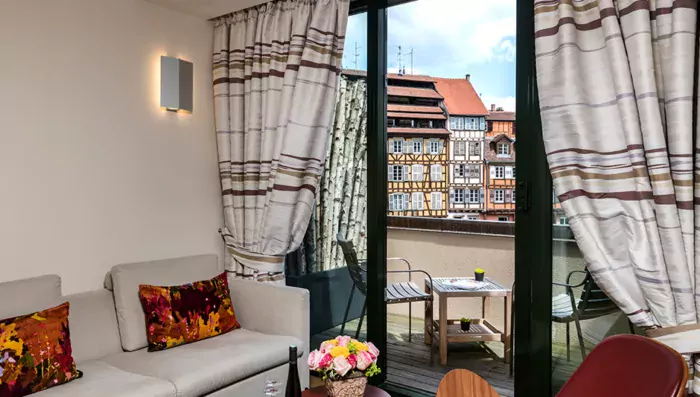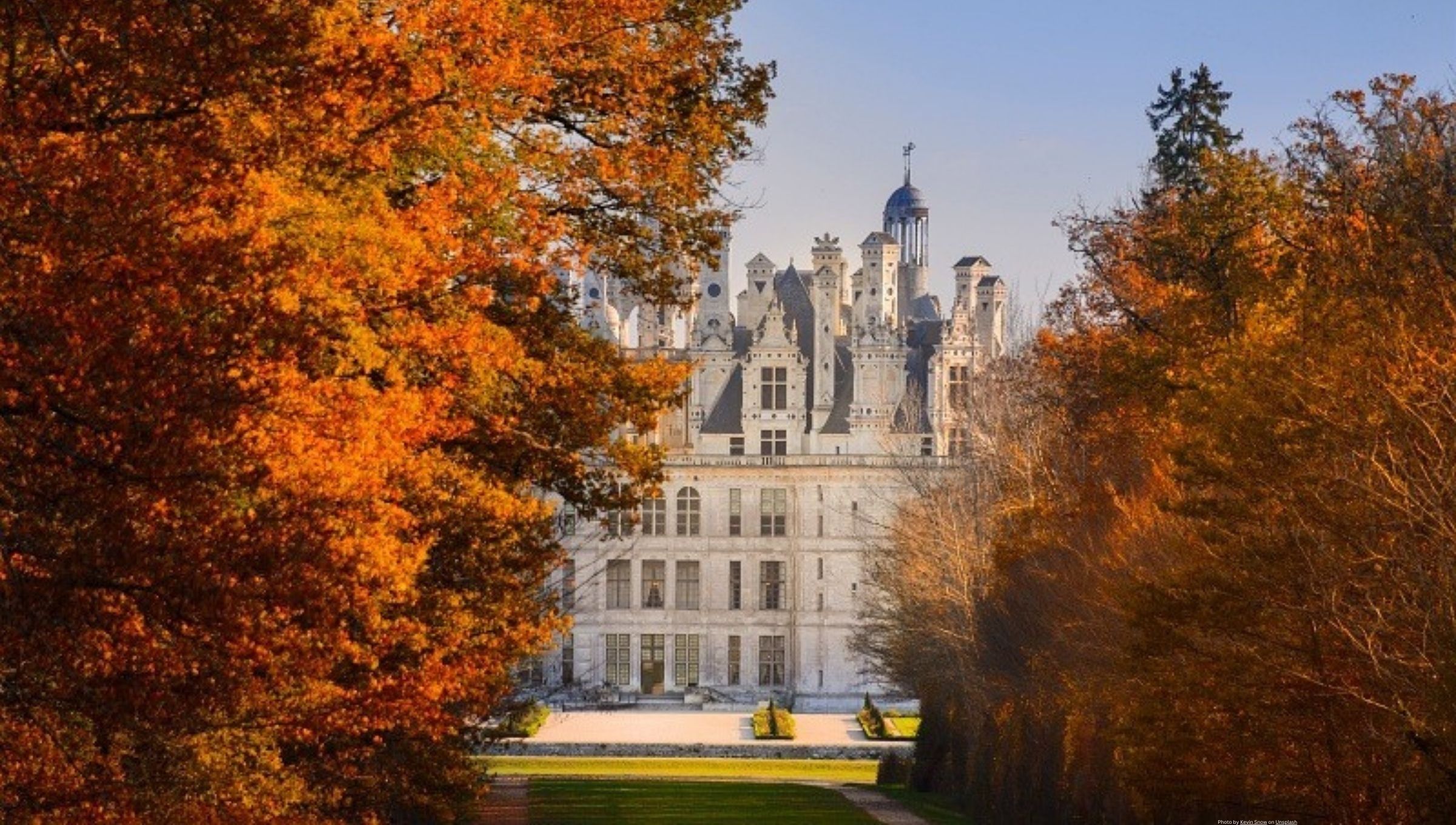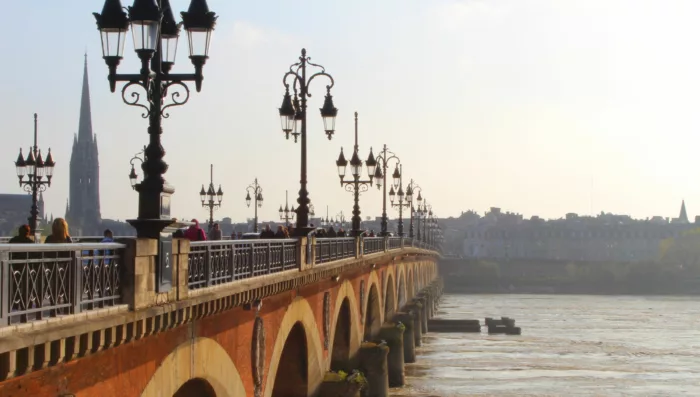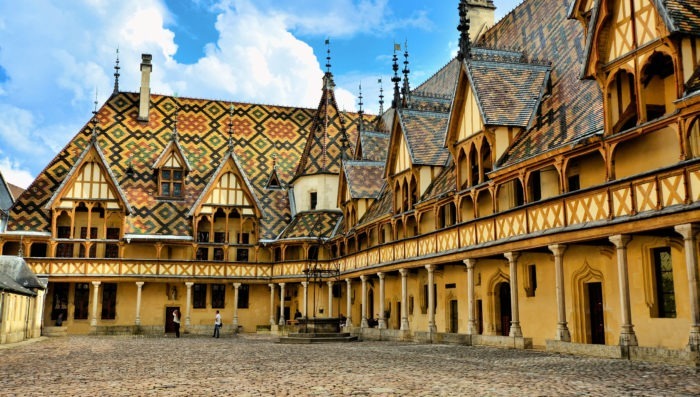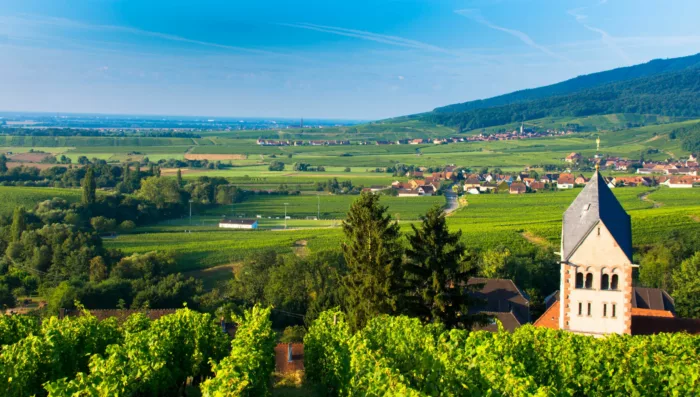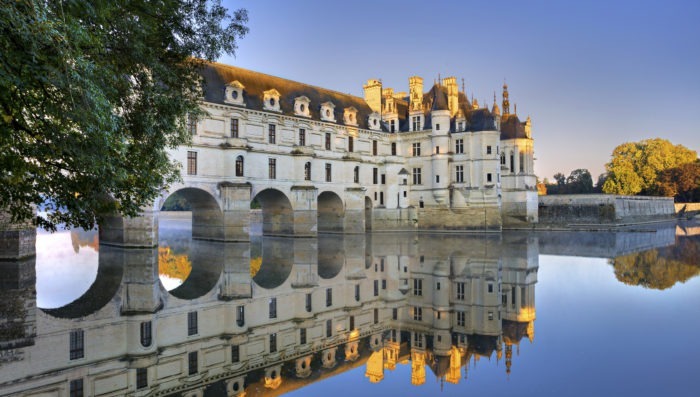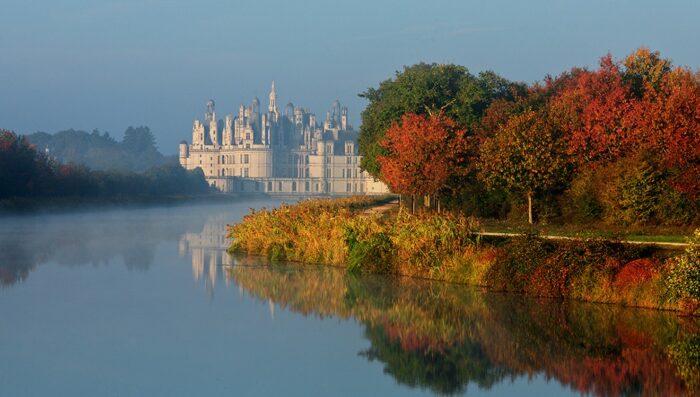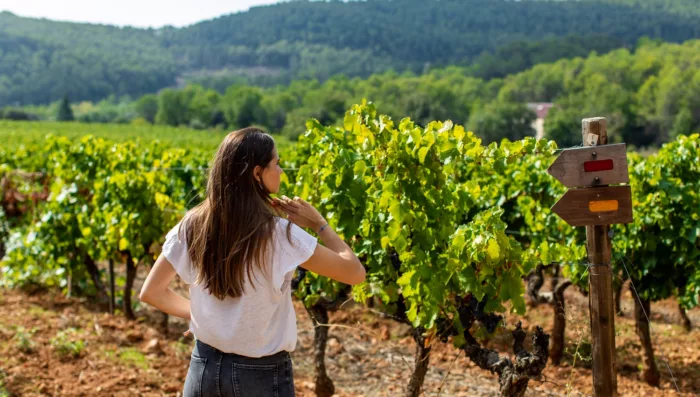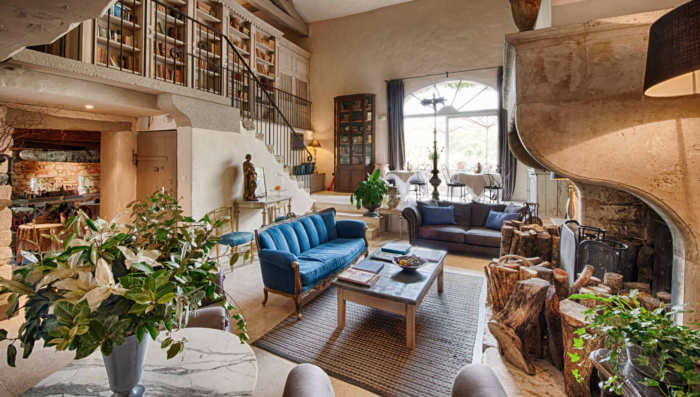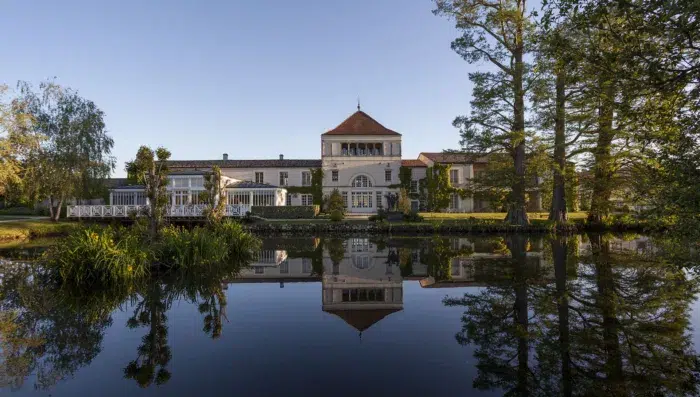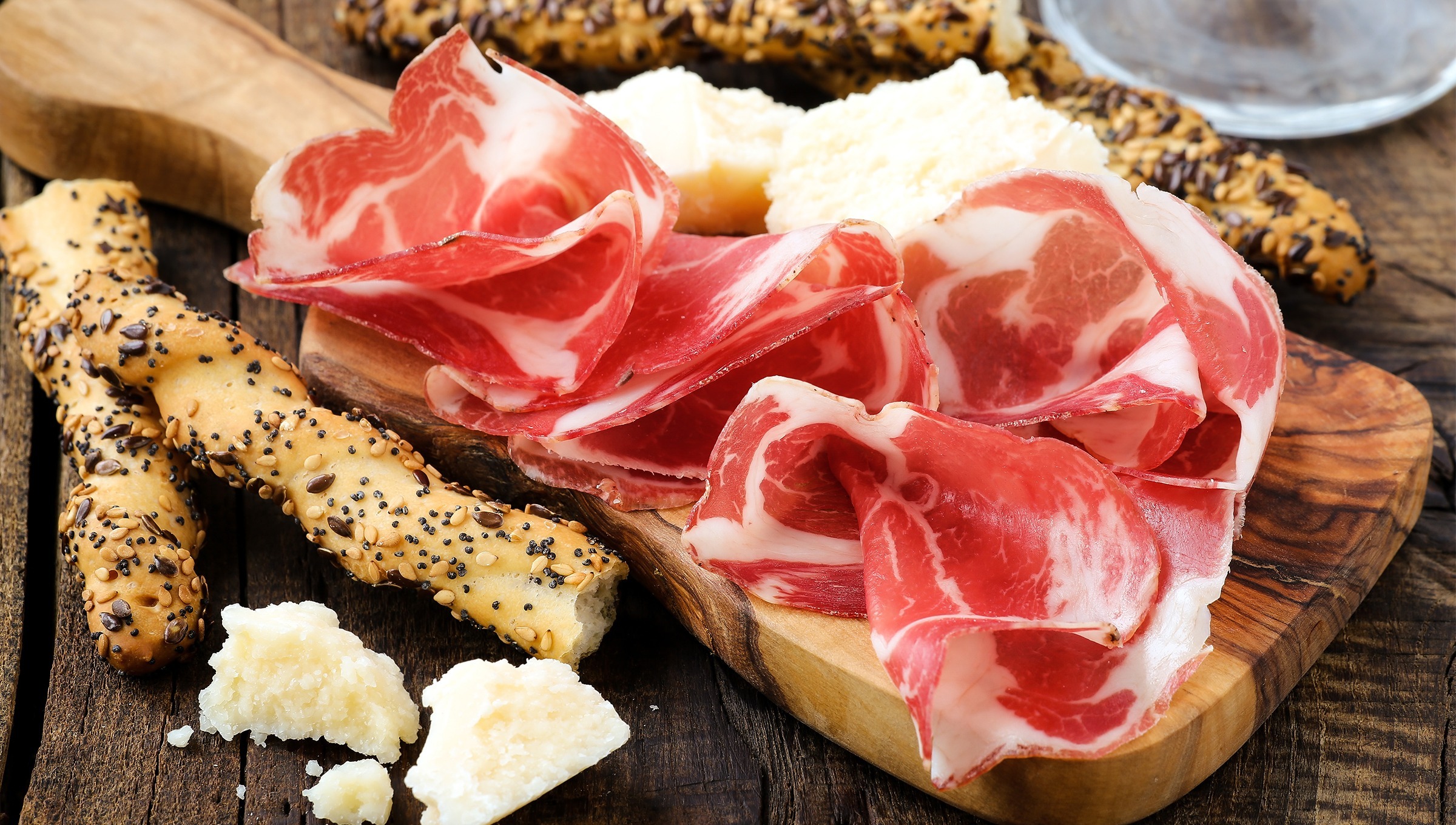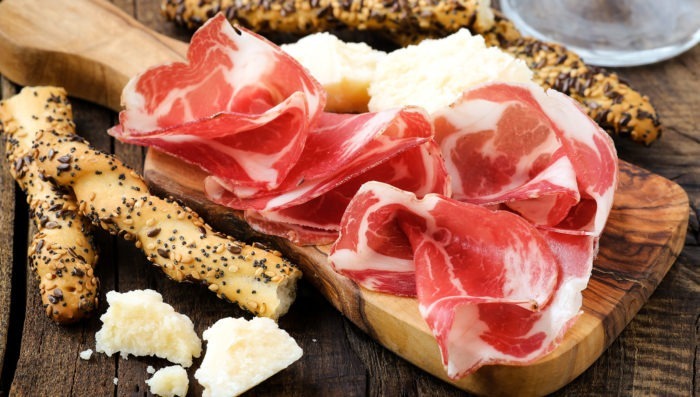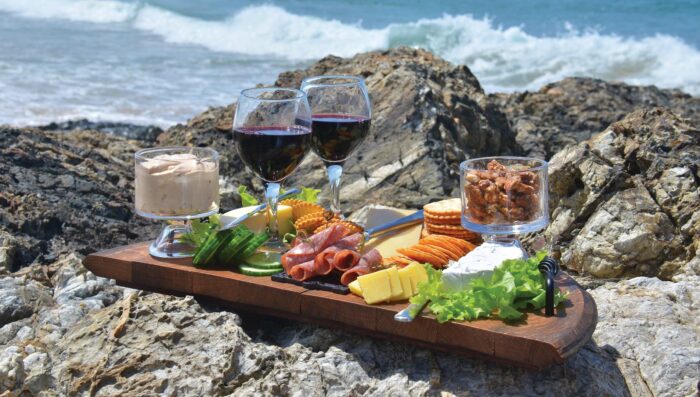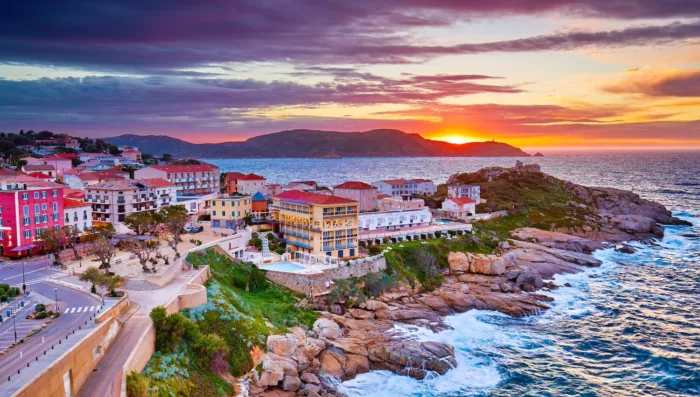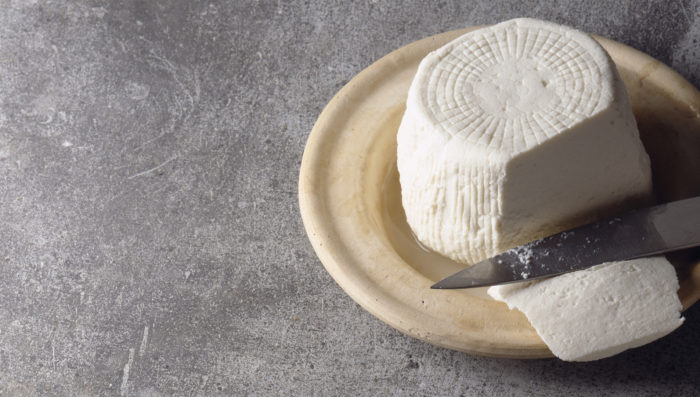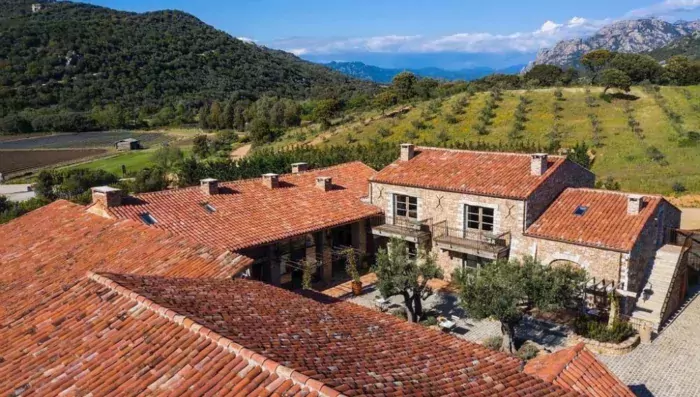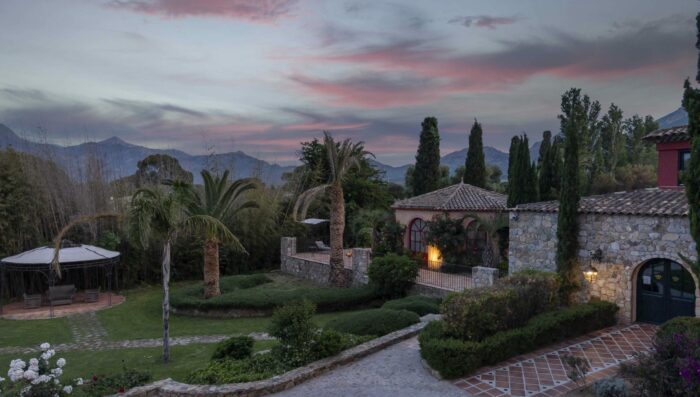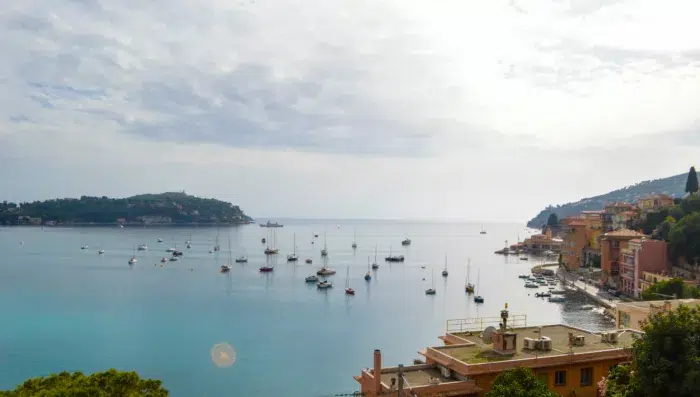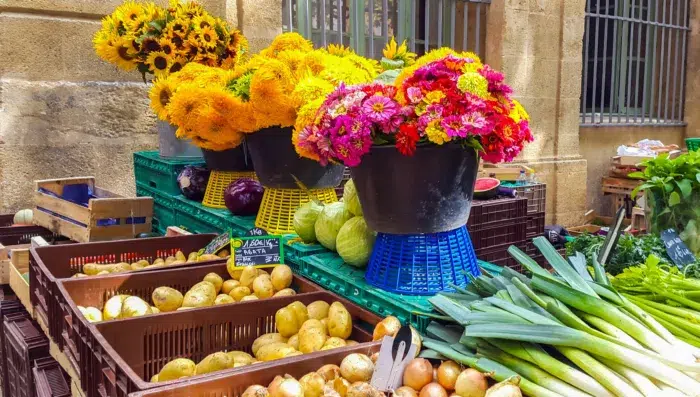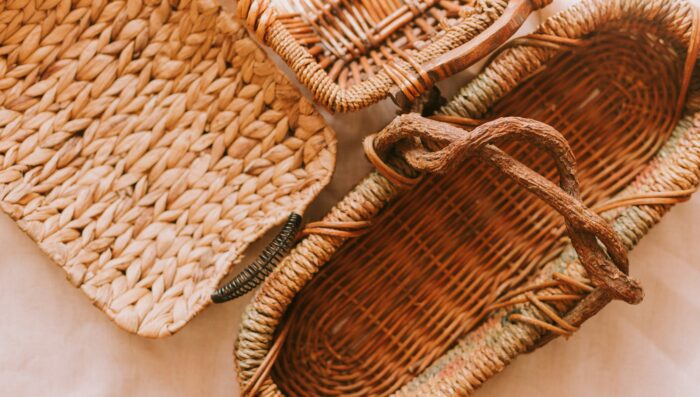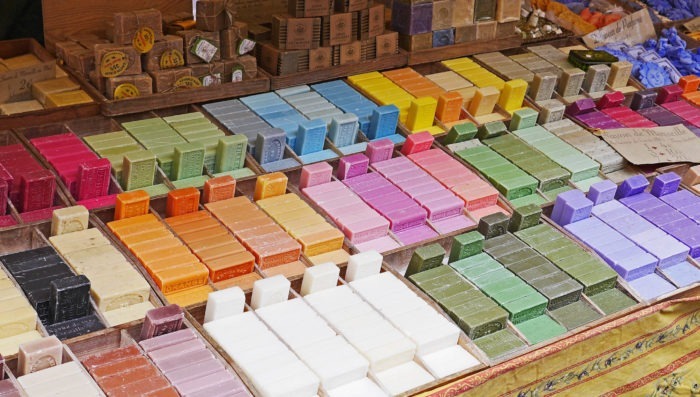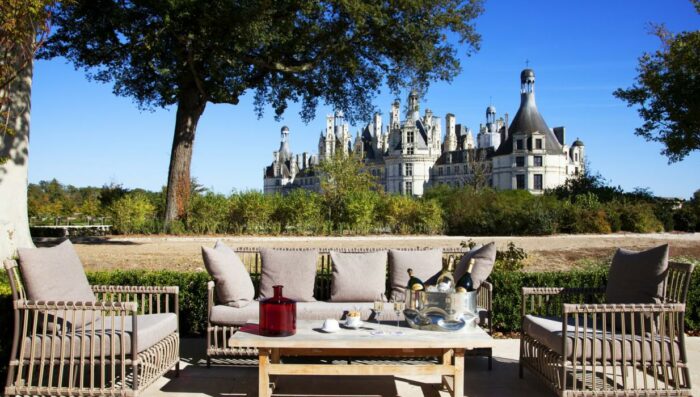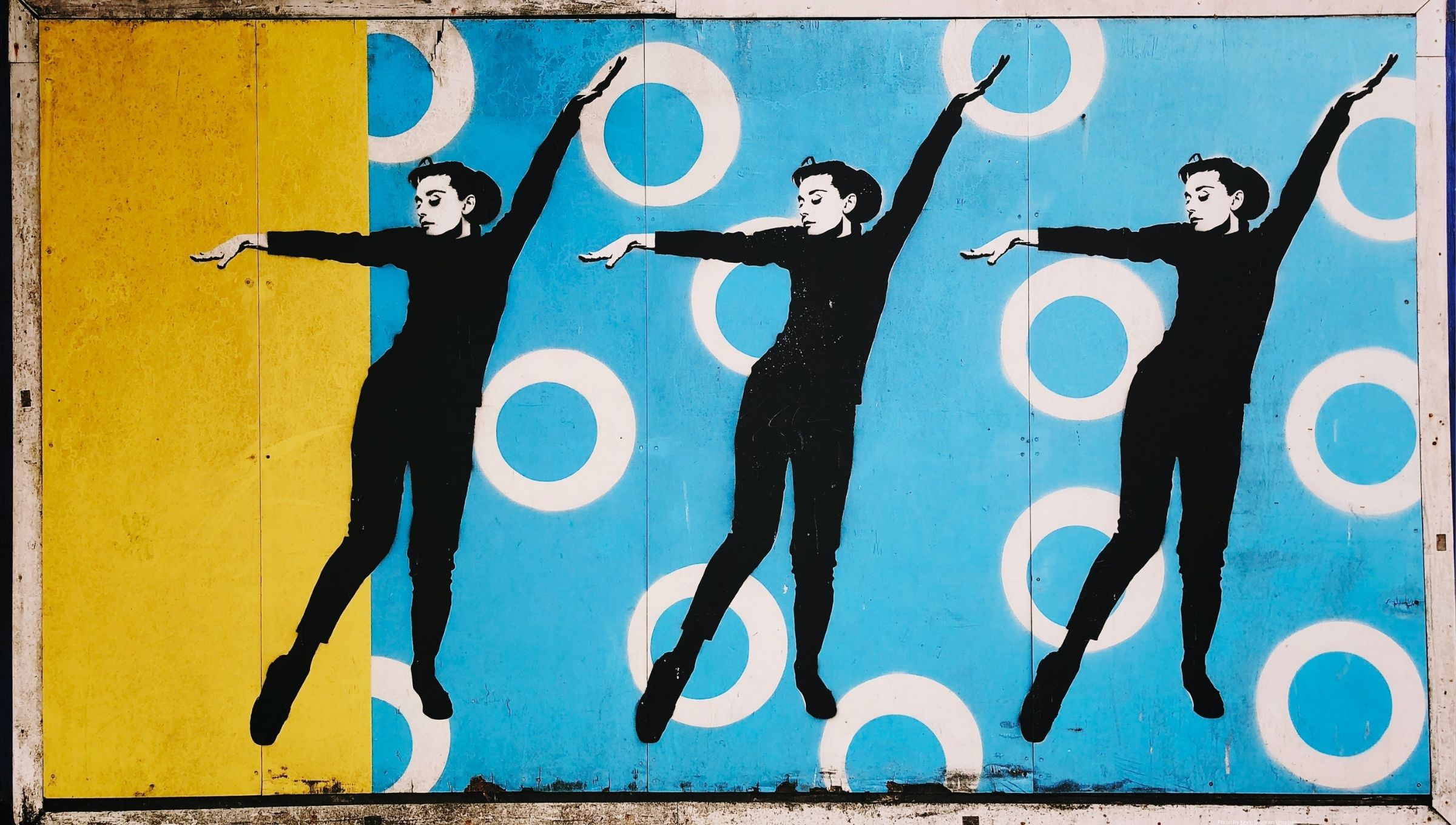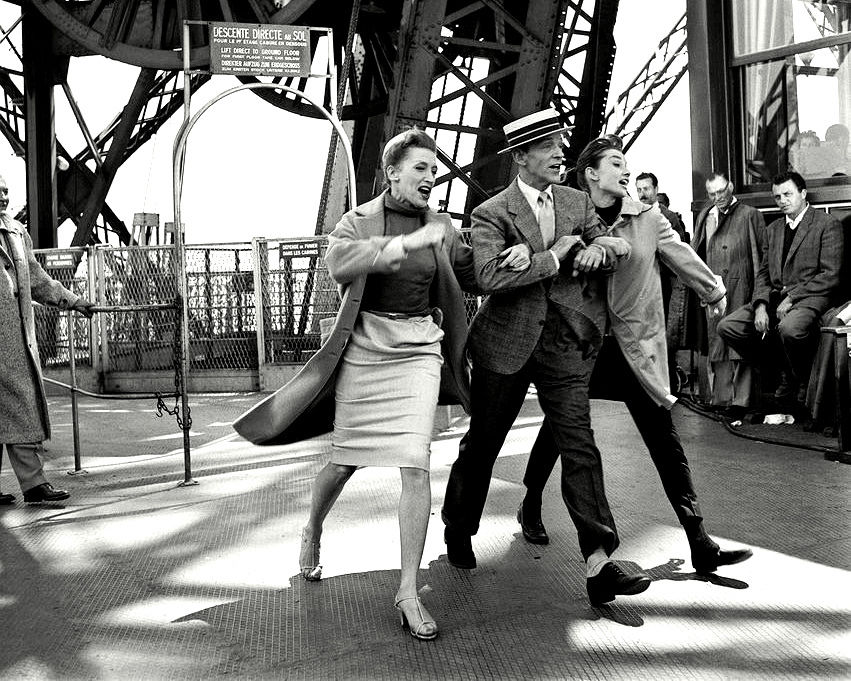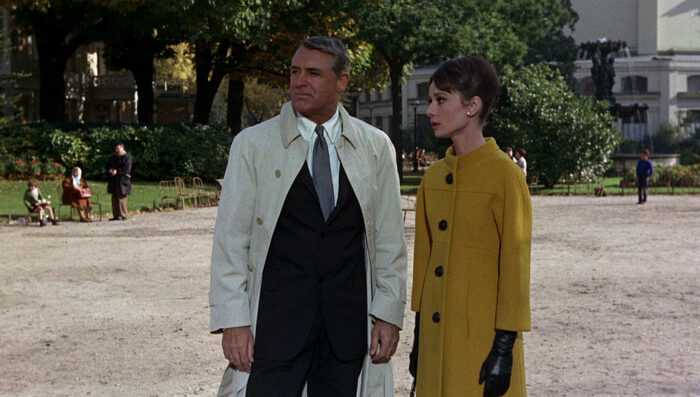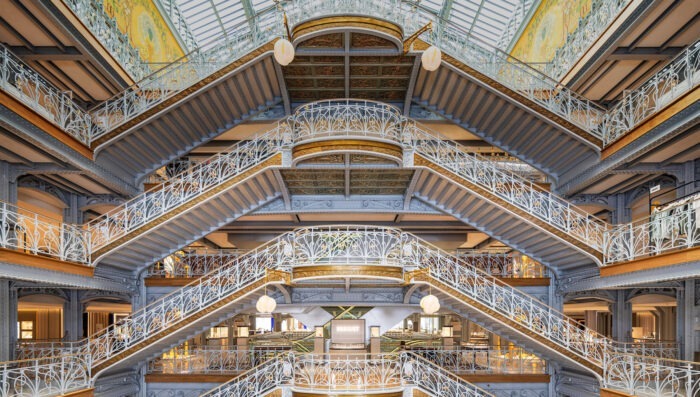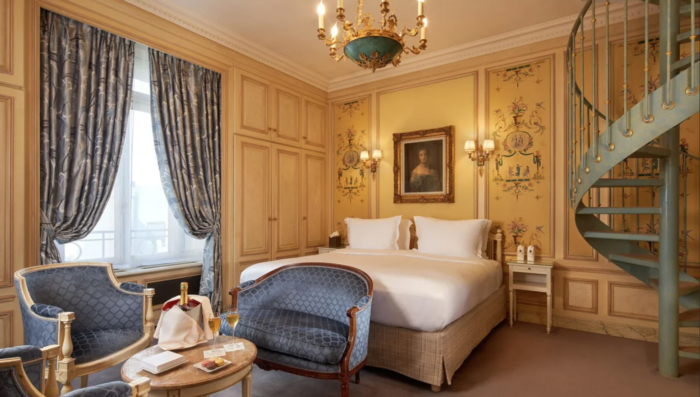From its snow-capped mountains to its idyllic ski villages, the French Alps promises enchanting experiences. But after a long day out in the snow or on the slopes, your body needs some rest and relaxation. From Megève to Chamonix, this region offers a wide array of hotels with luxury spas that are sure to tempt you. Whether you’re in the mood for sauna access or a rejuvenating facial, we’ve compiled some of the best hotel spas in the French Alps. From spa treatments to wellness facilities, here’s where you can unwind and warm up with some TLC during your trip to the French Alps.
Best Hotel Spas in the French Alps
Hotel Coeur de Megève
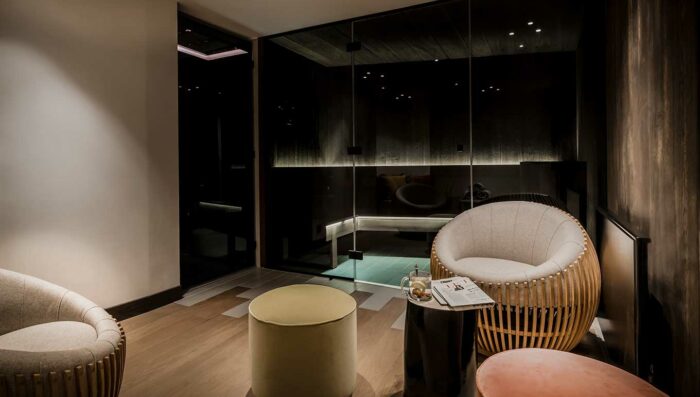
Treat your body to the care it craves with a visit to the Hotel Coeur de Megève’s spa. The spa uses Tata Harper’s natural, non-toxic products. Indulge in its Winter Rescue Facial to give your dry skin some luxurious care. Or opt for a personalized facial treatment based on your skin’s needs. After a long day of skiing, unwind with a Workout Recovery by Tata Harper treatment, which includes a purifying body scrub and massage. The hotel spa even offers parent-child duo treatments such as facials and massages. No need to leave the relaxation behind once you return home. The spa also offers a variety of Tata Harper products from serums to cleaners.
Les Balcons du Savoy
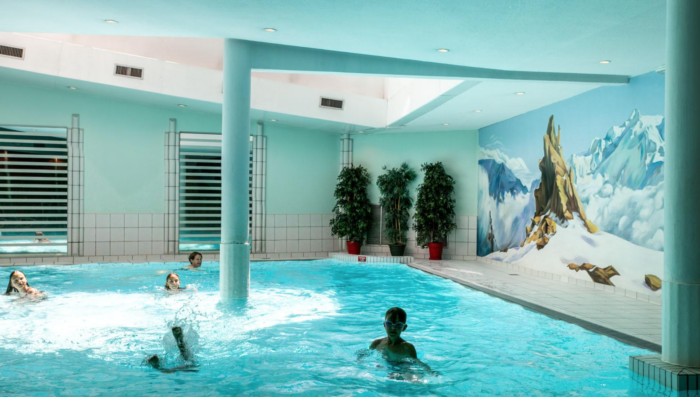
Located in Chamonix, les Balcons du Savoy will charm you not only with its cozy Savoyard decor but also its spa facilities. After a day out in the snow, warm up at Les Balcons du Savoy’s sauna and heated indoor pool with a view of Mont Blanc. Opt for one of its spa’s massages, perhaps their Swedish hot stone treatment. Located in Chamonix, this four-star hotel is just an hour’s drive from Geneva.
Hotel Le Val Thorens
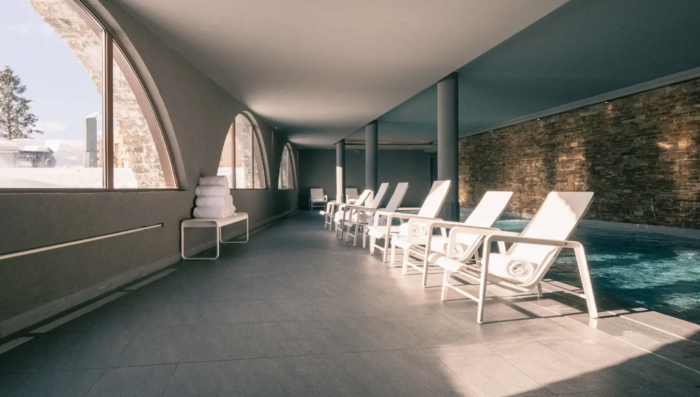
This ’70s-inspired hotel will charm you with its retro decor, close proximity to the slopes and its spa and wellness offerings. Move your body during a yoga class overlooking the mountains. And warm up with a trip to the hotel’s cozy hammam or sauna. Le Val Thorens’ hotel will enchant you with its massage menu. Opt for a pre- or post-ski massage with Theragun technology to target tense muscles. Opt for one of its packages including time at the spa and lunch at La Brasserie du Val Thorens.
Hotel Mont Blanc
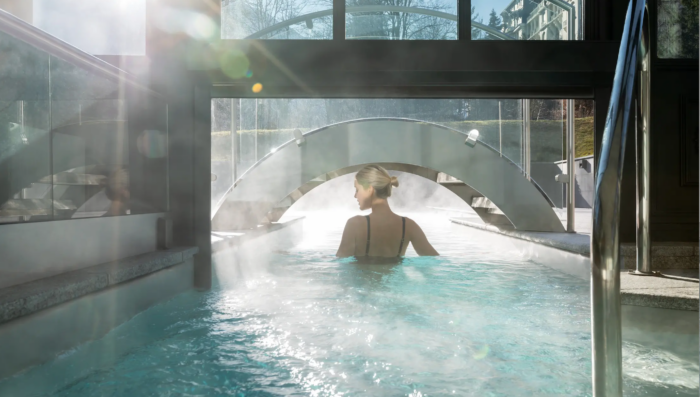
Located in Chamonix, this five-star hotel will have you drooling over its mountain views and its extensive spa and wellness experiences. Treat yourself to its Lunch and Spa offer, which boasts a 3-course meal, spa access and Clarins treatment. Pamper yourself with a Rebalancing Massage with Essential Oils either with its stimulating Tonic or calming Relax oil. Or enjoy time in one of its Scandinavian showers or heated outdoor pool.
Hotel du Pralong
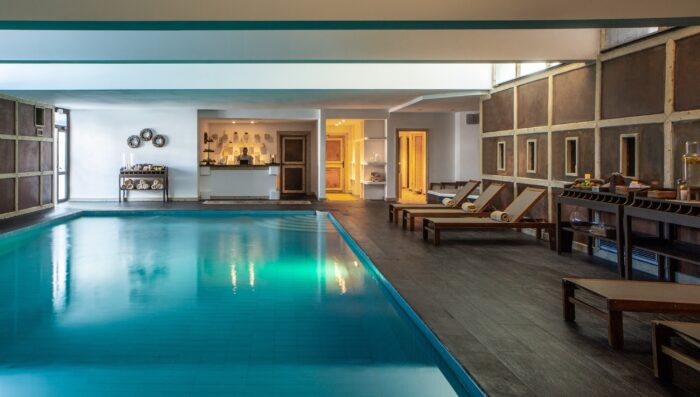
Hot tub, sauna, hammam – the choice is yours at the Hotel du Pralong. Dating back to 1850, this 5-star hotel is tucked in Courchevel. In partnership with Kos Paris, this hotel has a swath of spa treatments to care for your body and skin. Whether you’re longing for a calming Lomi-Lomi massage or a Mauritian sugar body scrub, your rendez-vous with relaxation awaits. Give your hands and feet a refresh with manicure and pedicure, and benefit from their selection of waxing services.
You might also enjoy our article on Romantic Trips to Take This Winter in France. Our team is available to help plan and organize your trip so that you can focus simply on enjoying it.
Grand Hotel du Soleil d’Or
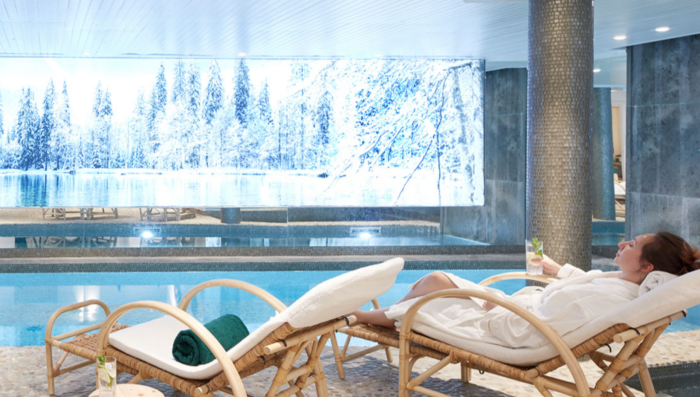
This five-star hotel in Megève is sure to enchant you with its cozy yet sophisticated decor as well as its extensive spa treatments. Let yourself unwind with a session in its hammam or sauna. Take a dip in its indoor pool overlooking the mountains. Foodies will adore this spa’s Chocolate Massage package, which includes a massage with chocolate almond oil, spa access and a mug of hot chocolate. Or treat yourself to its mango body scrub after exploring the village of Megève.
Altapura
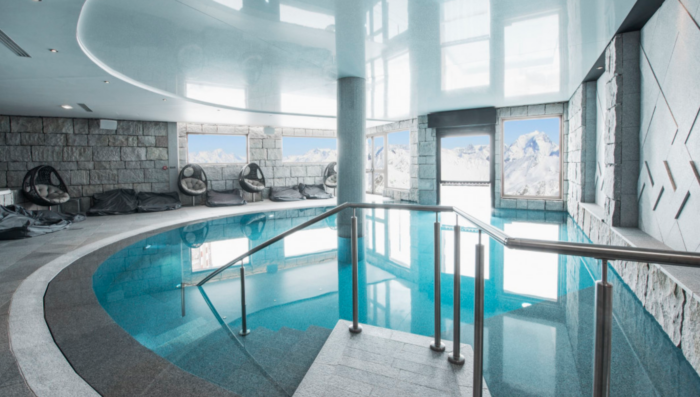
Nestled in the ski town Val Thorens, Altapura not only offers family-friendly stays and a ski concierge but also more than 10,000 square feet of spa facilities. The Spa By Codage at Altapura will wow you with its igloo-inspired room. Dedicate the entire day to Altapura’s spa with its day-access package, which includes a face or body treatment, spa and wellness facility access, and lunch at 2Mille3 restaurant. The spa also offers family packages so that everyone can enjoy the experience together. Or enjoy a romantic moment with its Duo Evening offer, which includes a couple’s face or body treatment, spa access and champagne.
Ski Courchevel’s Slopes in Exclusivity
Longing to have the slopes to yourself? At Courchevel, you can have exclusive access to the slopes after the ski station closes for the day, thanks to French Side Travel. You’ll start your evening enjoying a glass of wine during golden hour. As the sun starts to set, you’ll get equipped for a night skiing adventure. Your ski headlight will be provided and allow you to marvel the town’s lights from a VIP spot.
Les Airelles Val d’Isère

This five-star hotel’s Guerlain spa teems with luxury and relaxation for your getaway. Sip on a refreshing drink at its fruit juice bar or warm up with a cup of hot tea. The spa even offers on-site osteopathy appointments. If you enjoy staying active on your ski getaway, the spa at Les Airelles Val d’Isère also offers a fitness room as well as group and private yoga classes. Opt for its anti-aging Imperial Longevity facial or an après-ski massage. The spa also offers makeup services and parent-child treatments.
Hotel L’Apogée
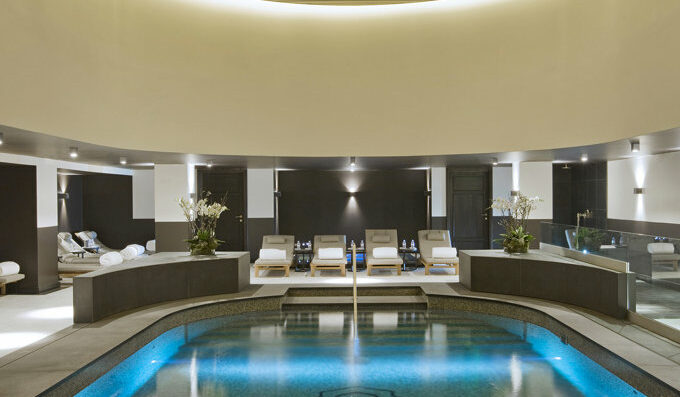
Located in Courchevel, this hotel will have you wanting to stay in, thanks to its Spa L’Apogée by La Prairie. This spa prides itself on its array of natural, organic products. Indulge in a body treatment that combines warm volcanic stones and cool jade stones and includes a massage. Or opt for a Brazilian lymphatic drainage massage. Book one of its Banya experiences, which offers privatized spa access and alternating between hot and cold.
The spa also offers manicures and pedicures as well as makeup and hair services. Spa L’Apogée has treatments for the whole family. Give some much needed love to your body with a coaching session or yoga class. From massages for pregnant mothers to crêpe-spa packages for adolescents, everyone is sure to find an experience to suit her fancy.
Perhaps these hotel spas experiences have you longing for an exquisite stay in the French Alps? At French Side Travel, we’re ready to help you plan a stay at one of these best hotel spas as well as other exciting activities in the region. You might also be interested in: Fabulous Skiing in Val Thorens and Winter Trip to Courchevel with Half Board.

